Lecture 21
BST and tree traversals
MCS 275 Spring 2022
Emily Dumas
Lecture 21: BST and tree traversals
Course bulletins:
- Worksheet 8 available.
- Project 2 grading underway.
- I know project 2 proved to be challenging for many students.
- Project 3 will be posted this week, is due Friday 18 March.
Update BST class
Let's make it so that BST() is considered a valid, empty tree.
treeutil
I added a module to the trees sample code folder which can generate random trees. You'll use it in lab this week.
IntegerSet
As a sample application of BST, we can make a class that stores a set of integers, supporting membership testing and adding new elements.
Compare alternatives:
- Unsorted list - fast to insert, but slow membership test
- Sorted list - fast membership test, slow insert
Implementation Hiding
To use BST, you need to know about and work with Node objects.
In contrast, IntegerSet has an interface based directly on the values to be stored. It hides the fact that its implementation uses a BST.
Walking a tree
Back to discussing binary trees (not necessarily BST).
For some purposes we need to visit every node in a tree and perform some action on them.
To do this is to traverse or walk the tree.
Named traversals
The three most-often used recursive traversals:
- preorder - Node, left subtree, then right subtree.
- postorder - Left subtree, right subtree, then node.
- inorder - Left subtree, node, then right subtree.
Note: They all visit left child before right child.
Preorder traversal
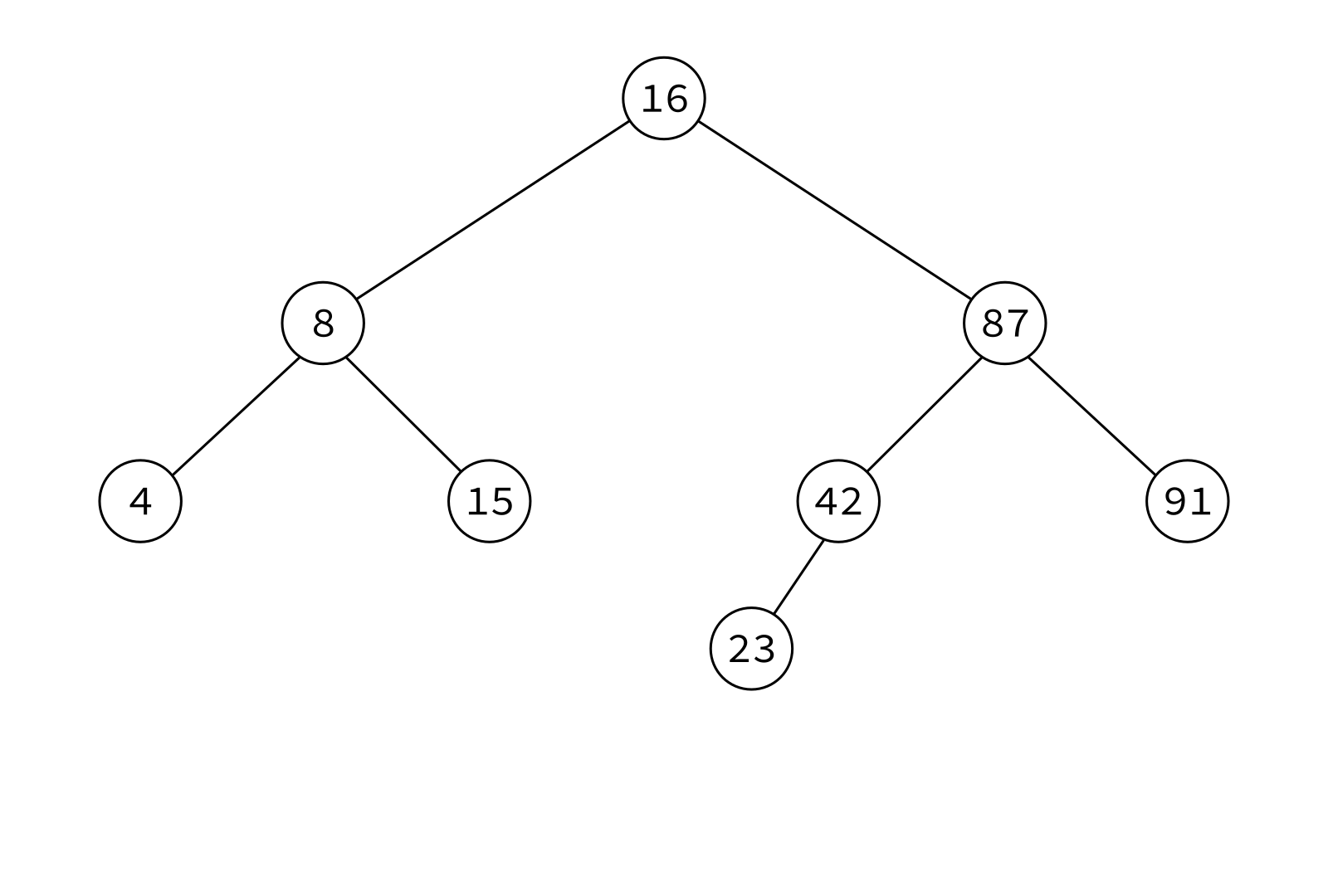

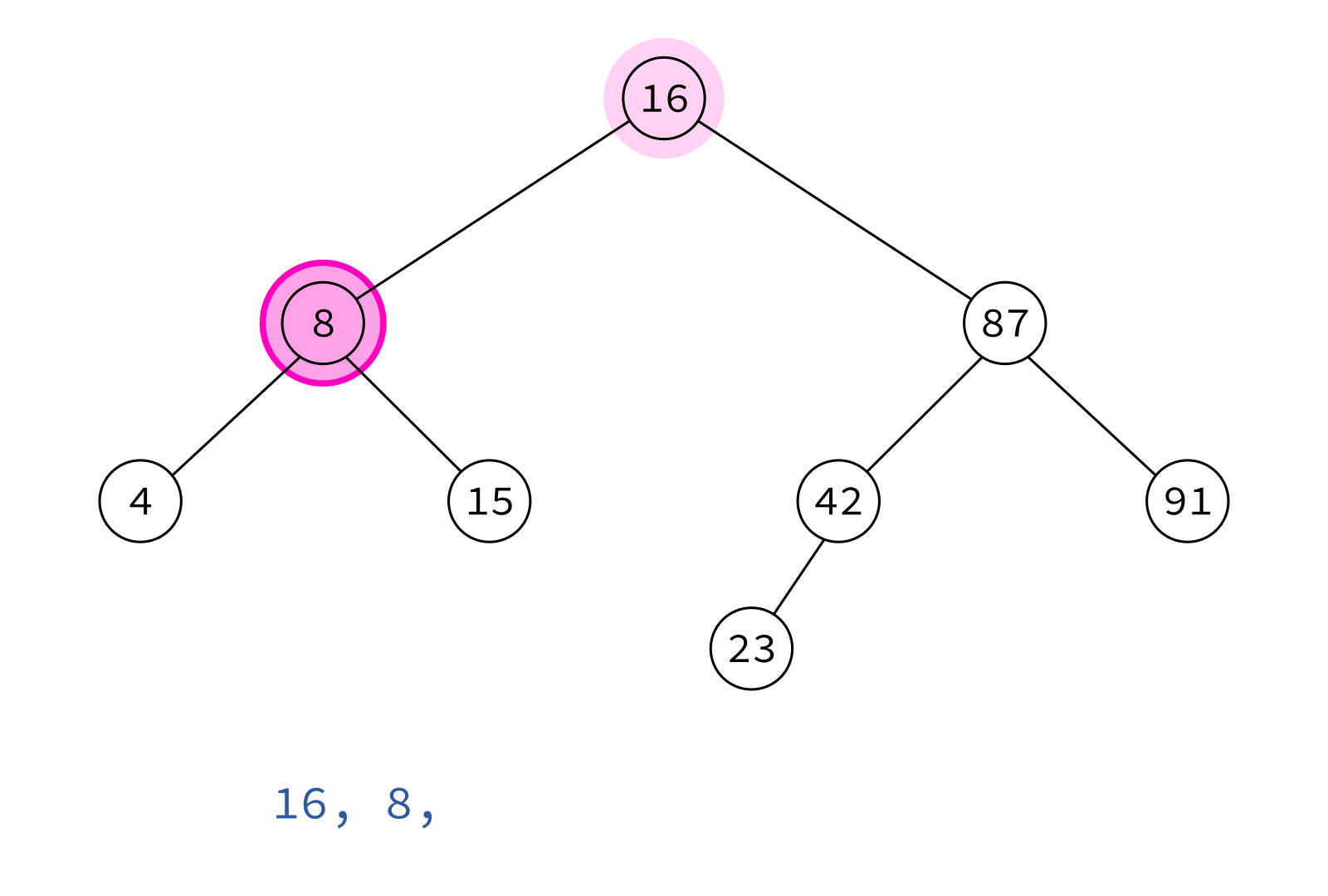

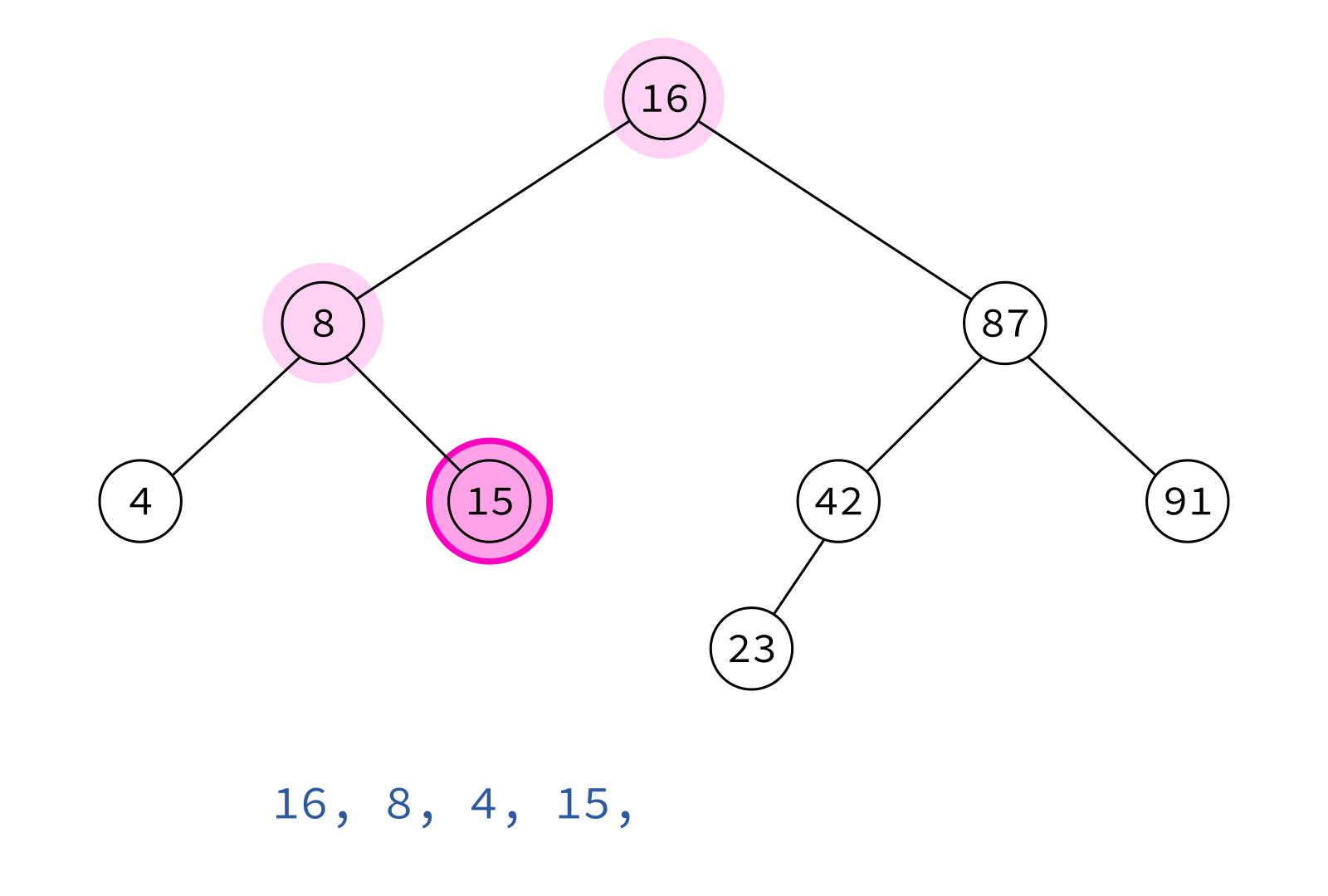
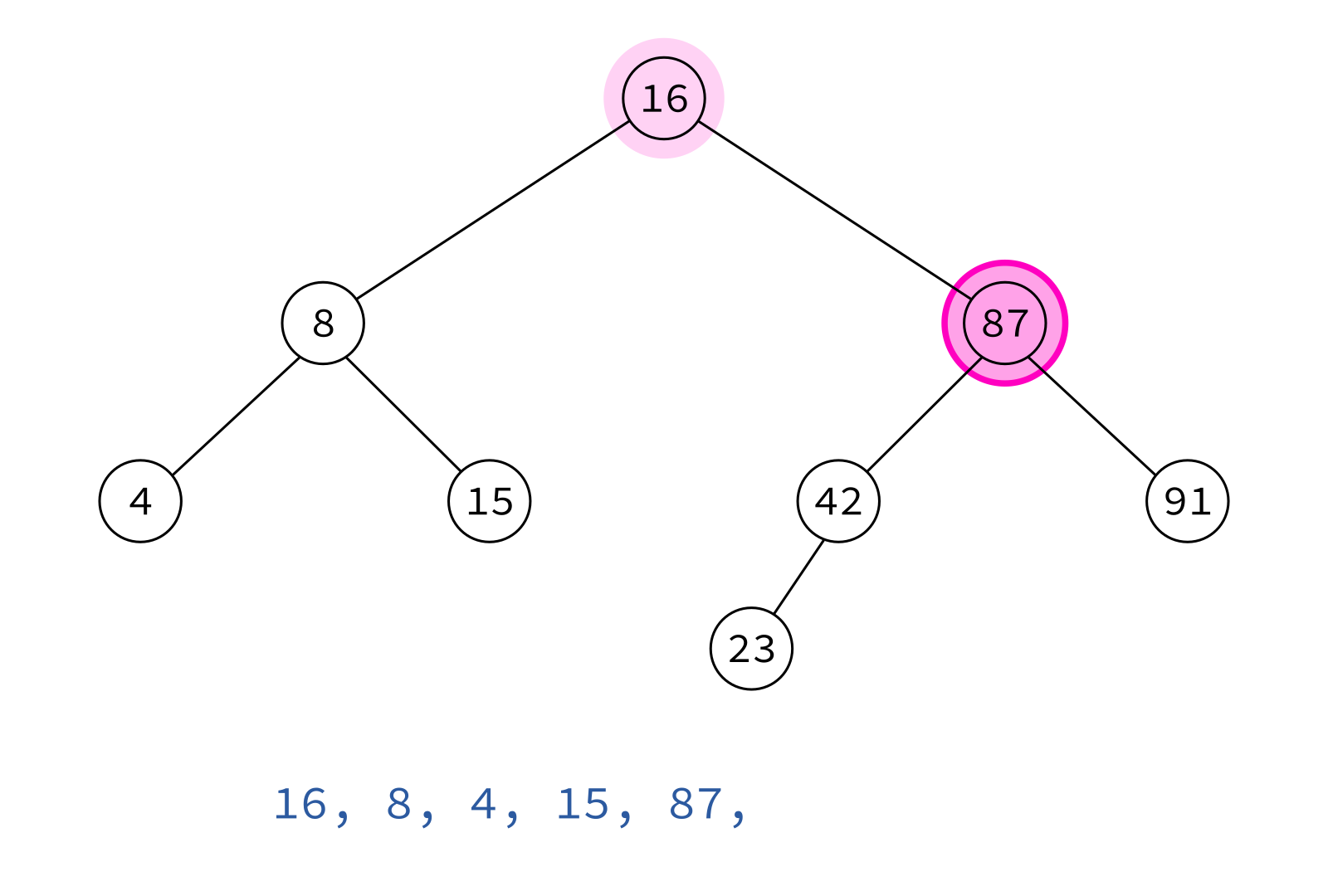
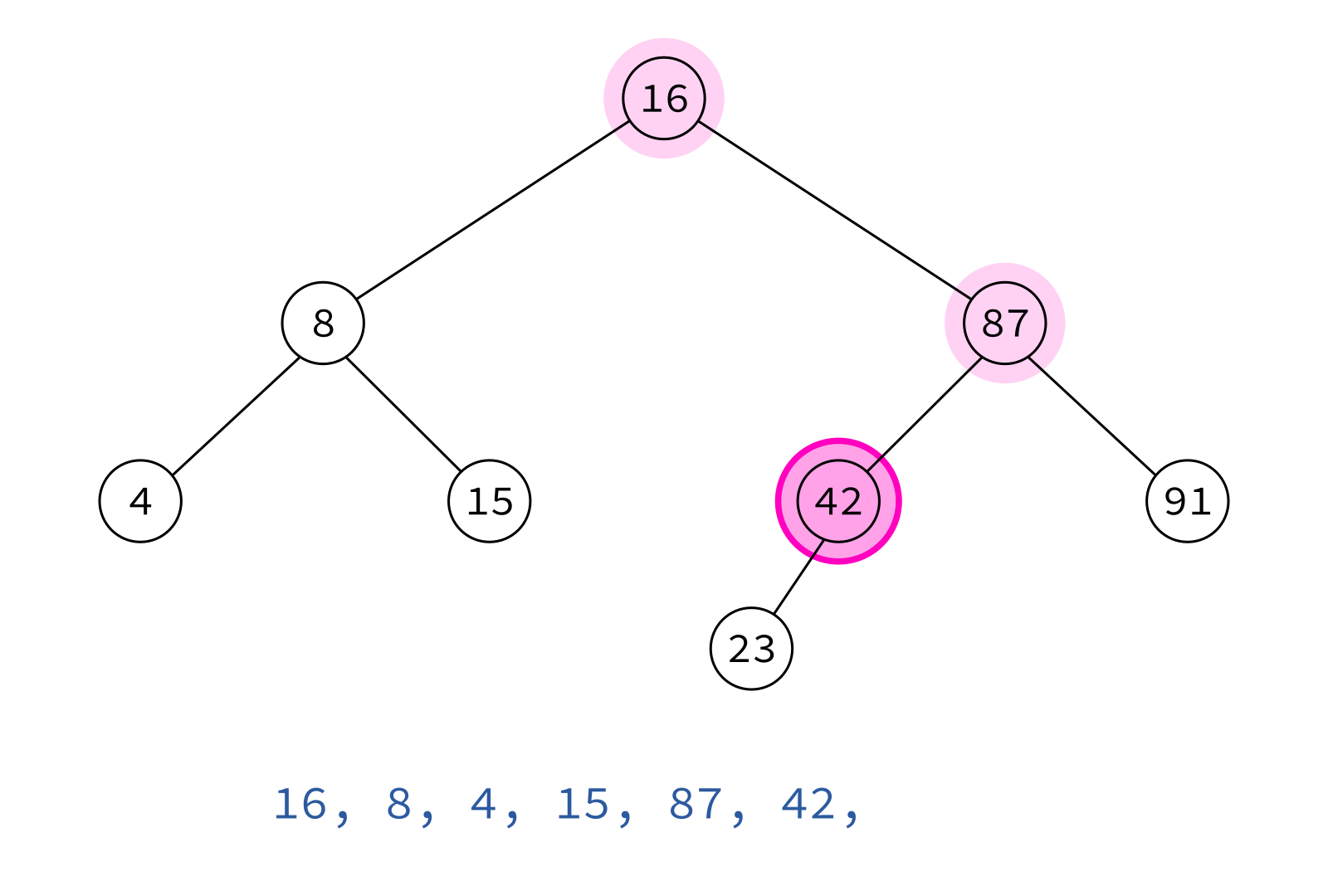

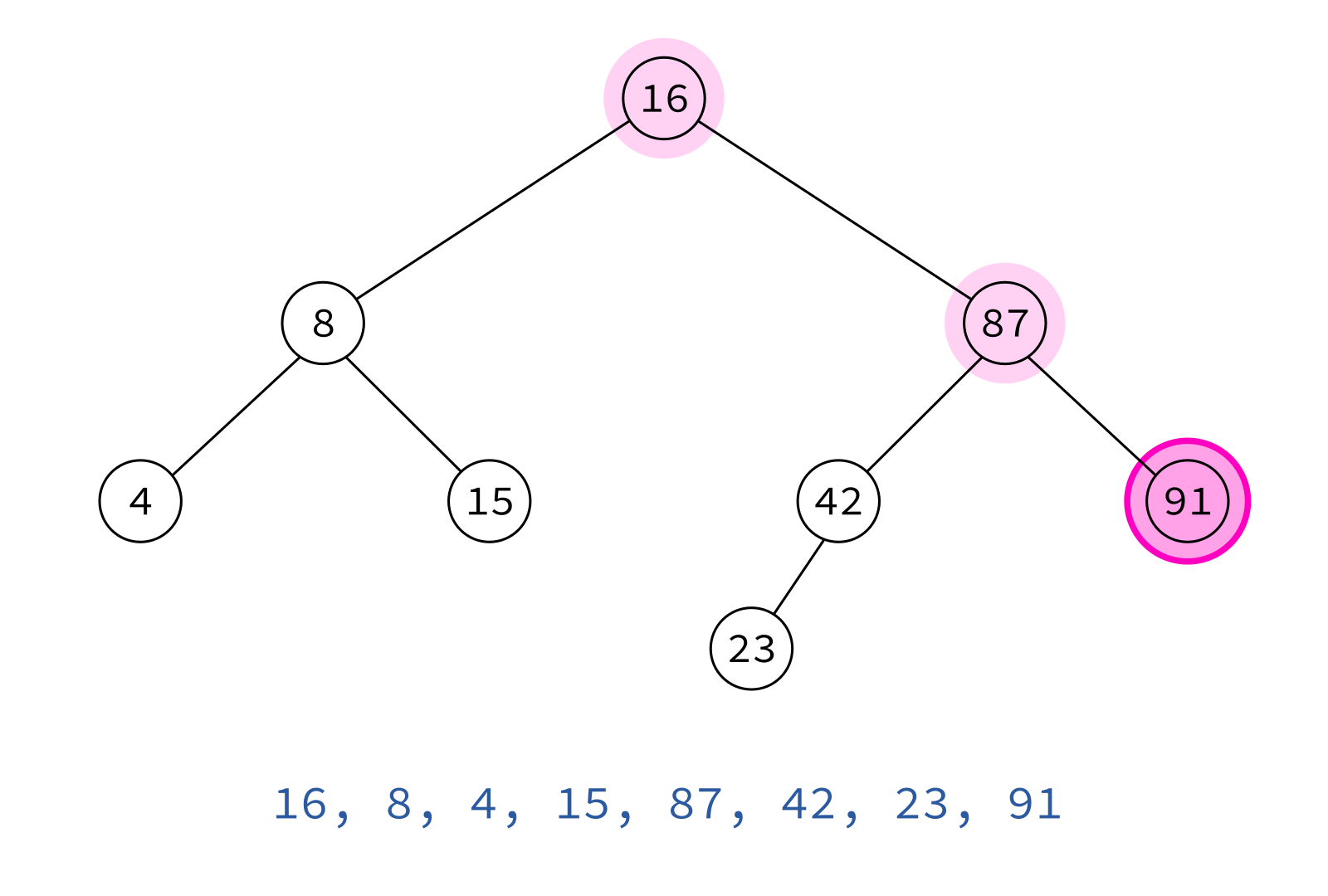
node, left, right
Preorder traversal
Typical use: Make a copy of the tree.
Insert the keys into an empty BST in this order to recreate the original tree.

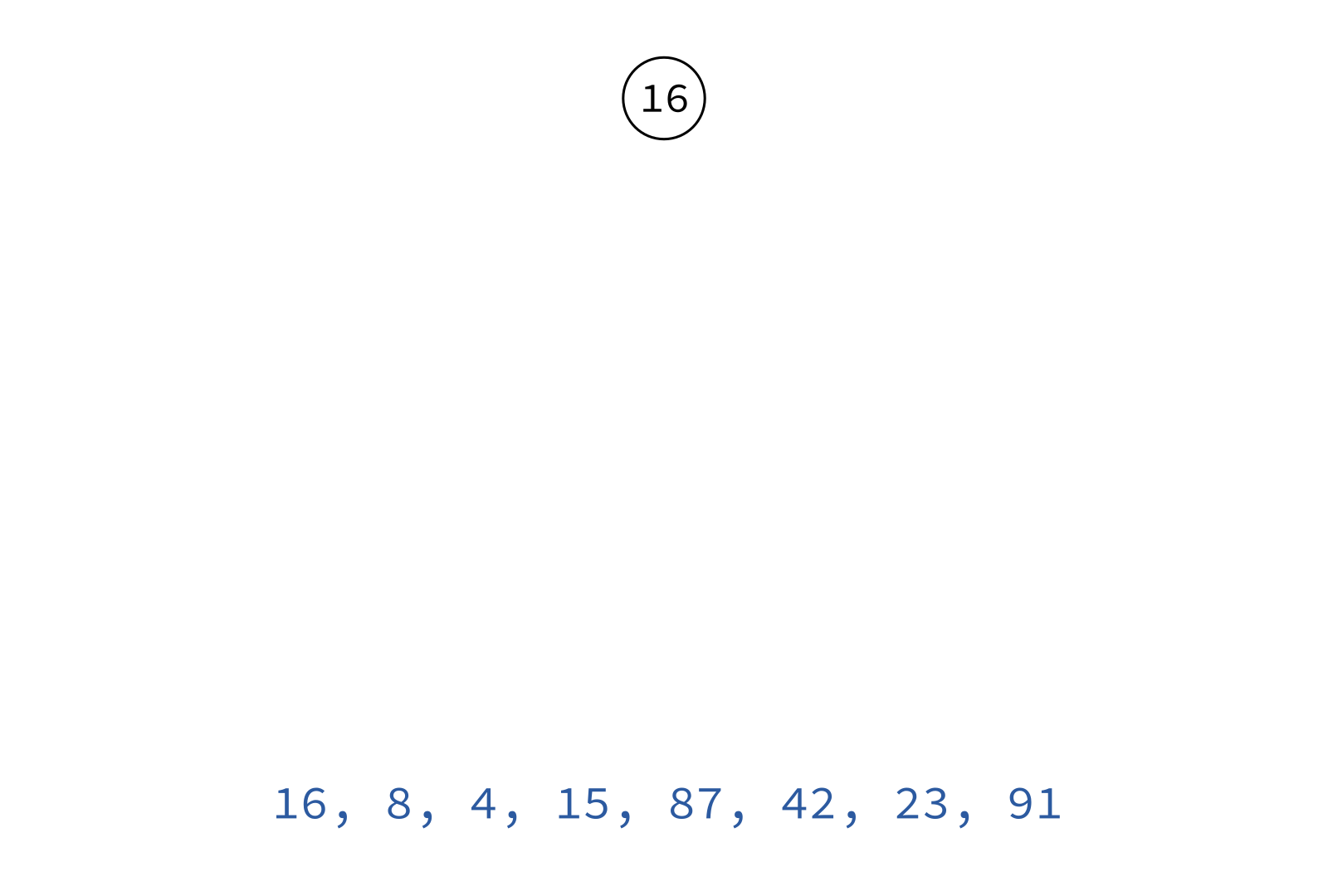
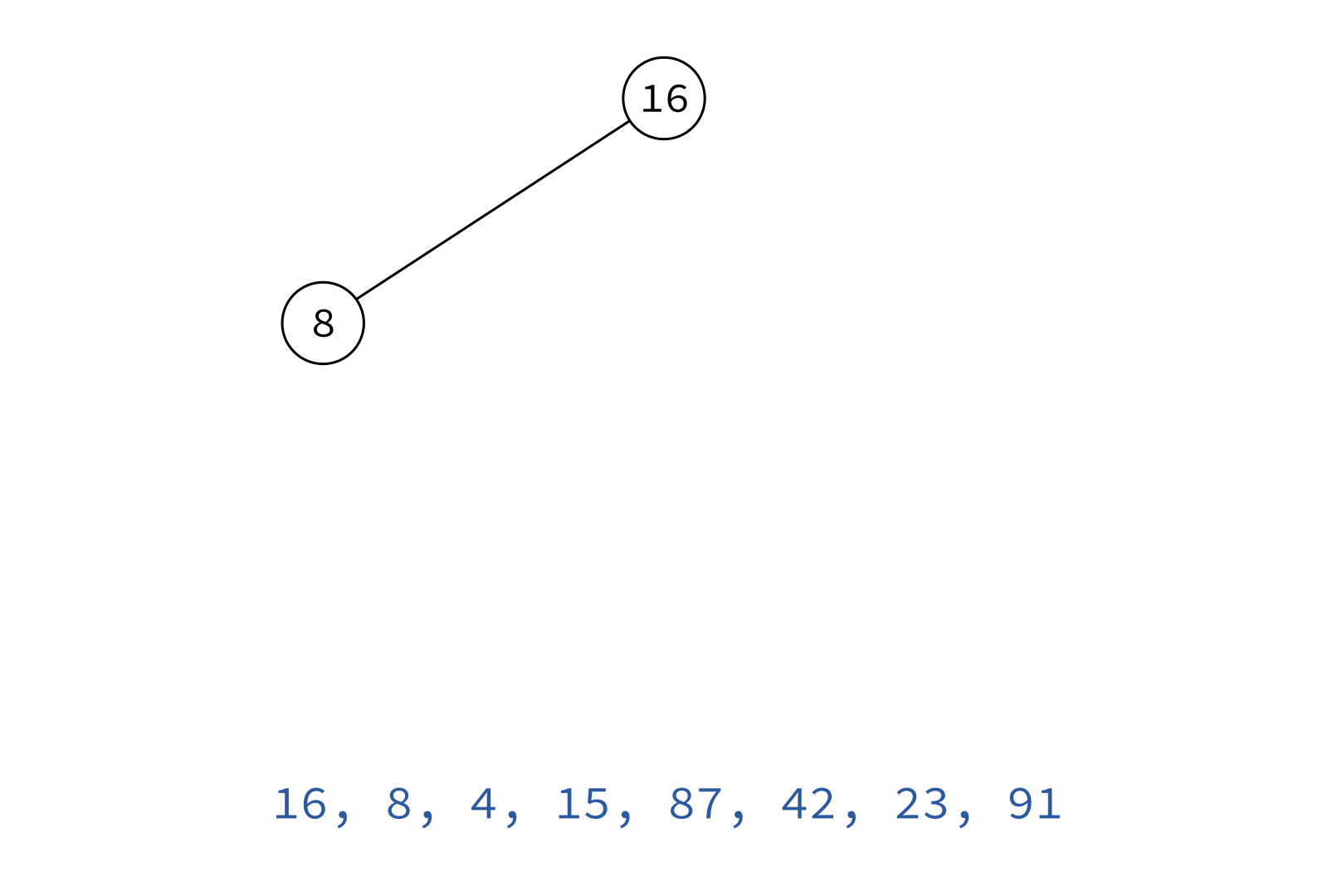
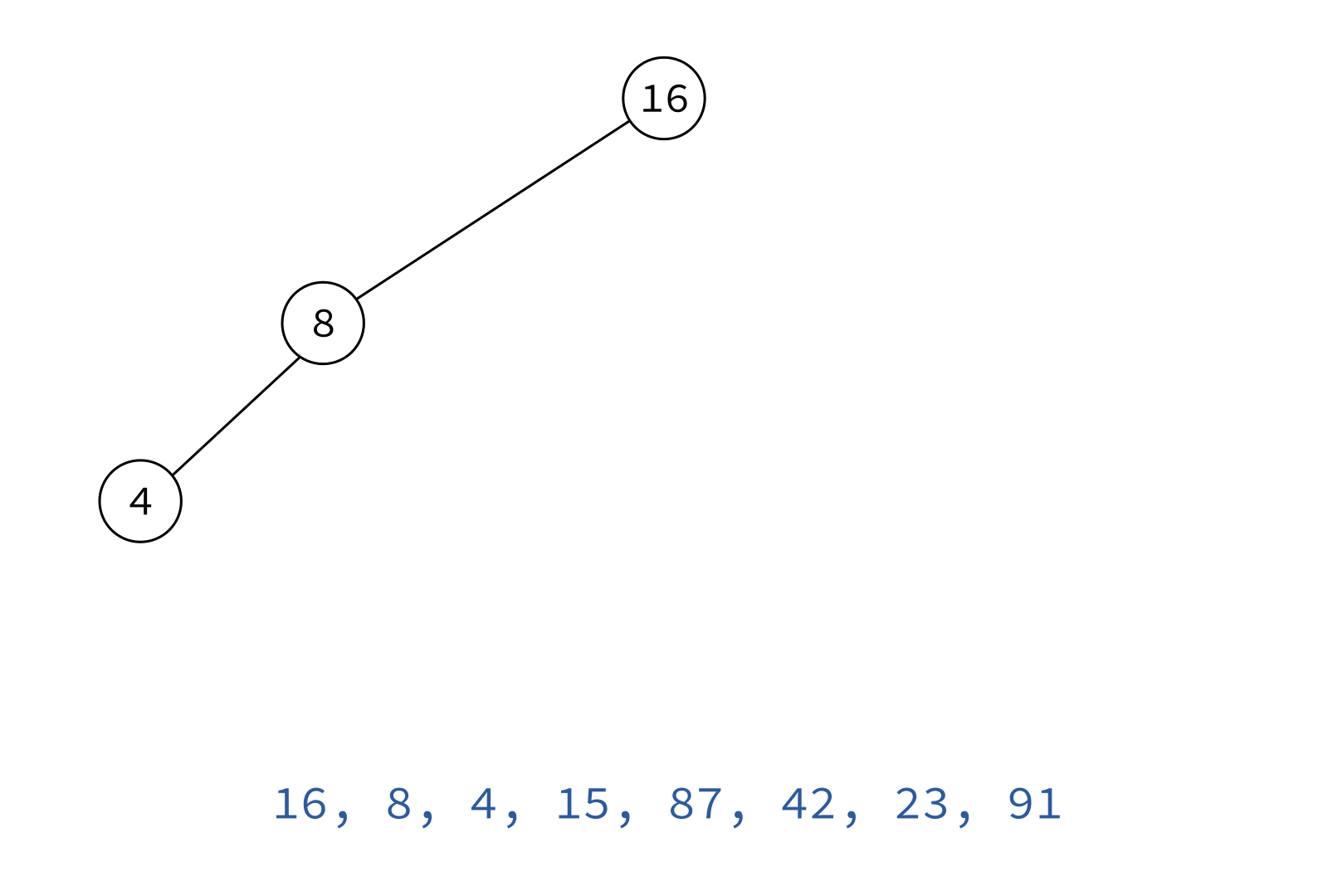
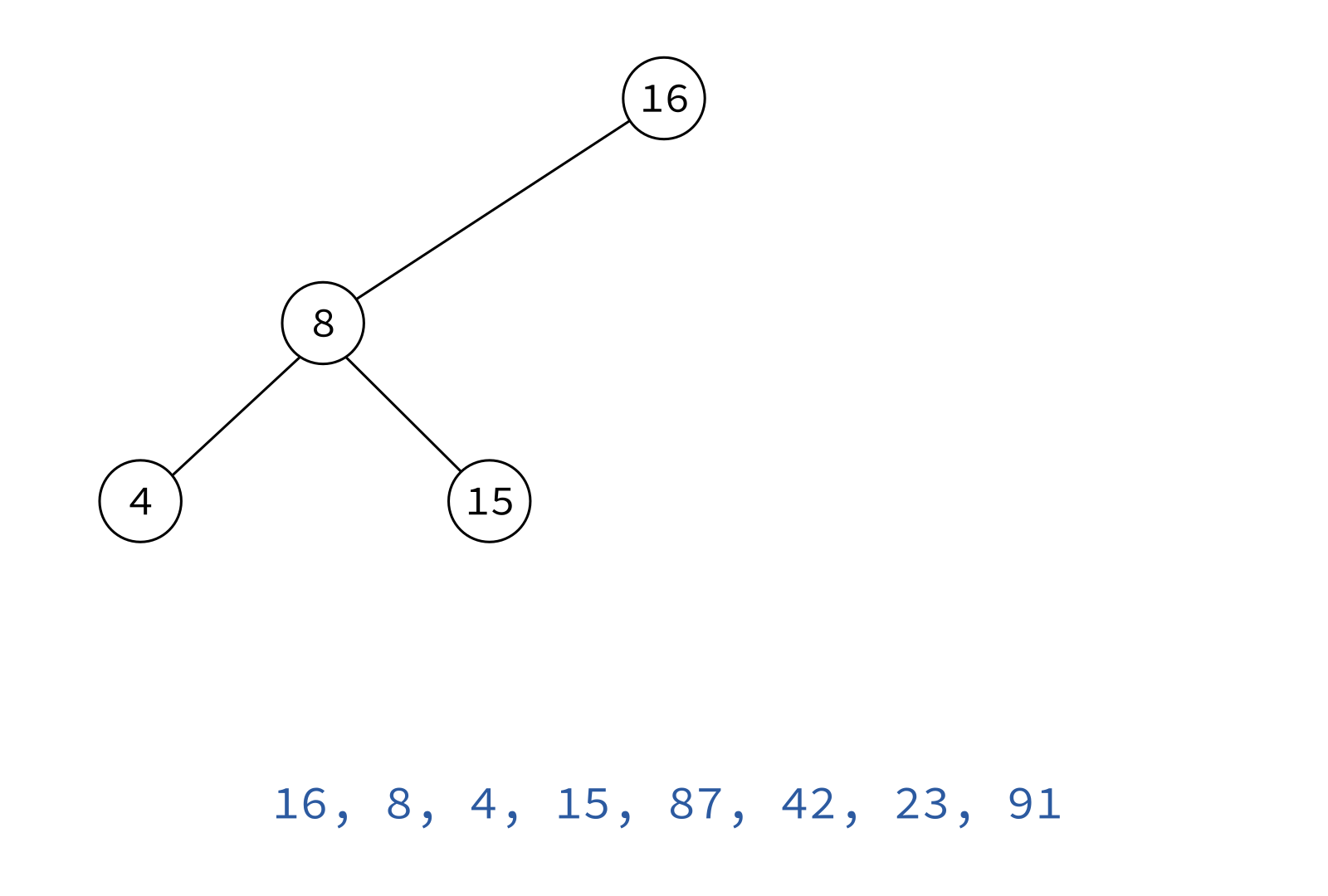
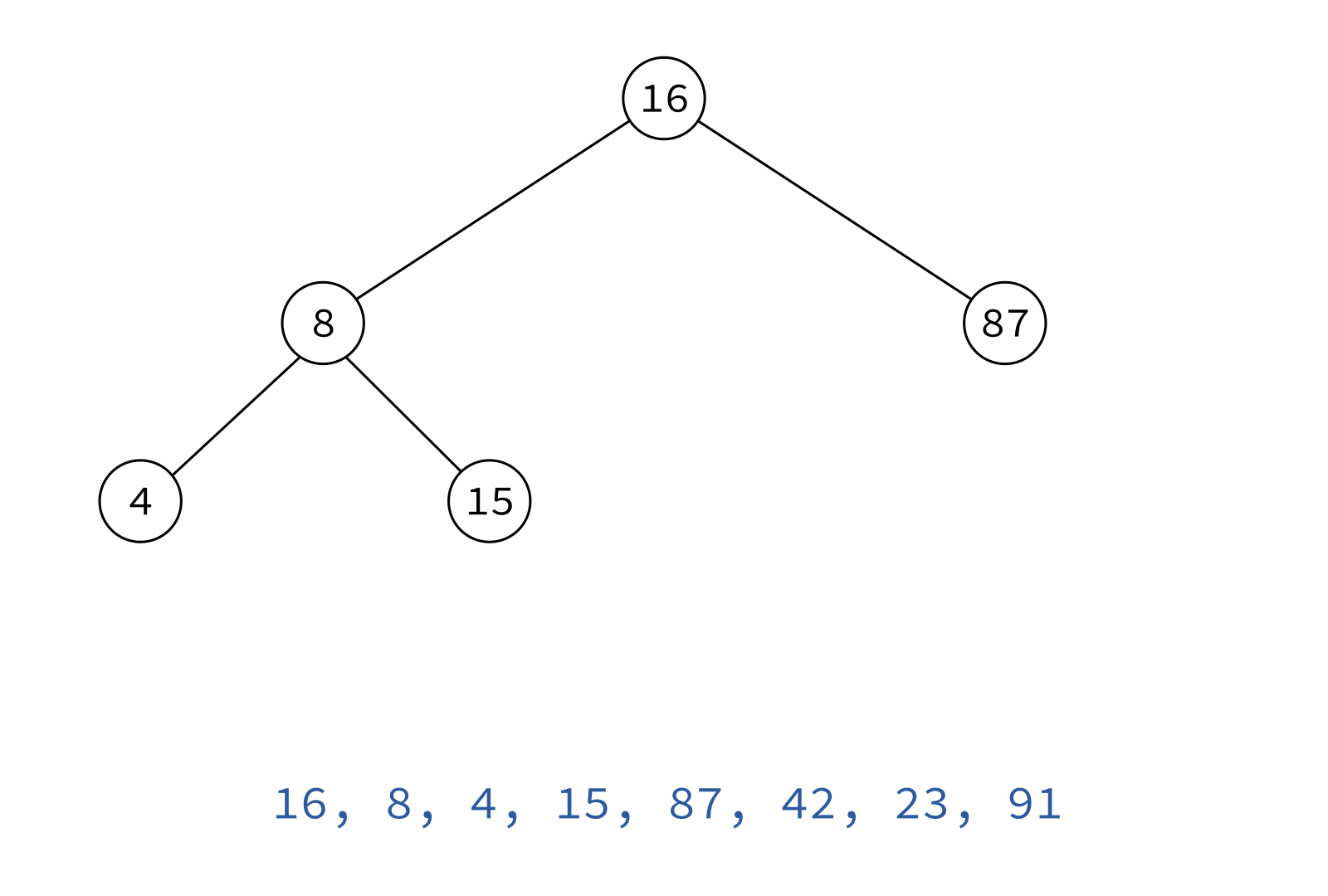
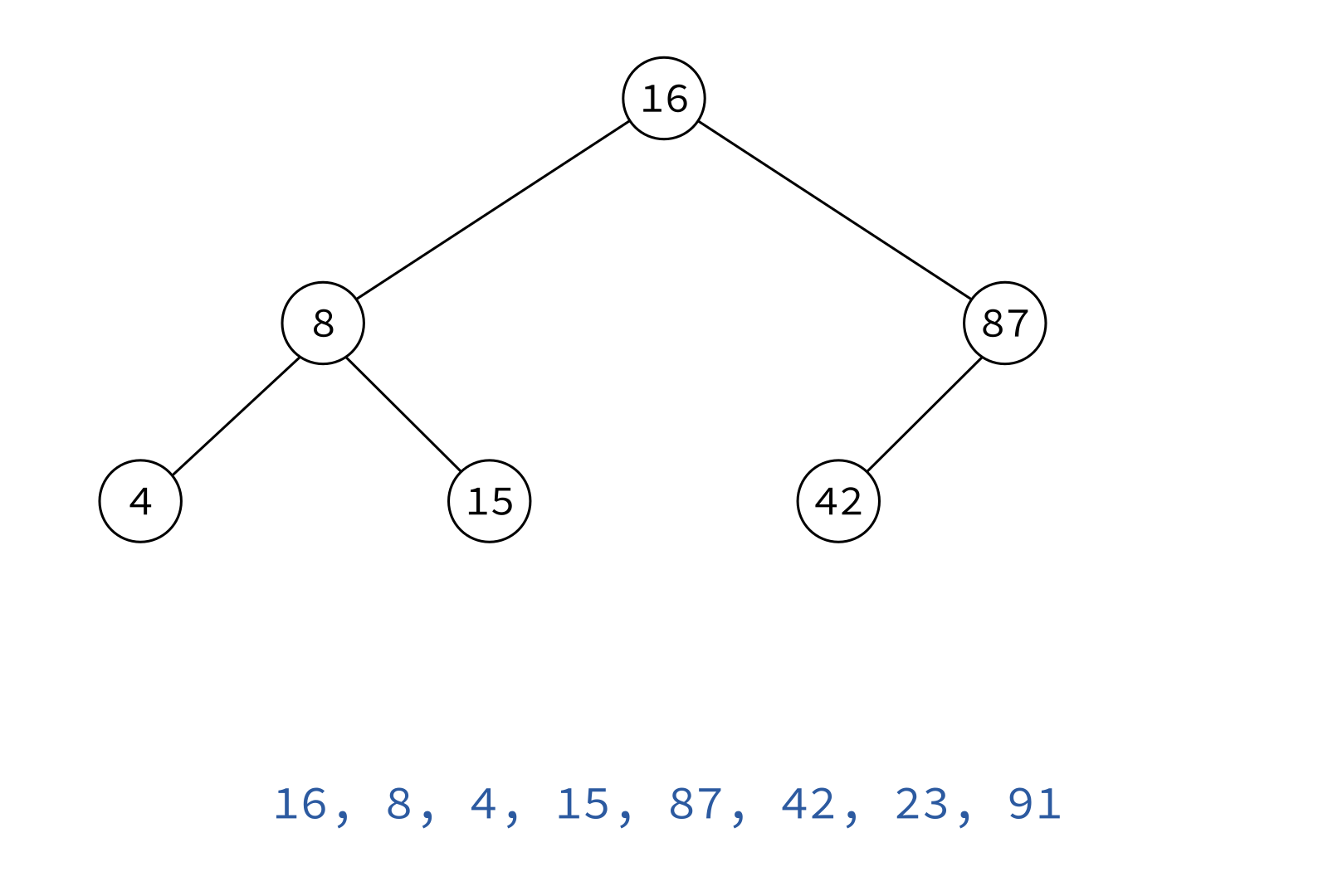
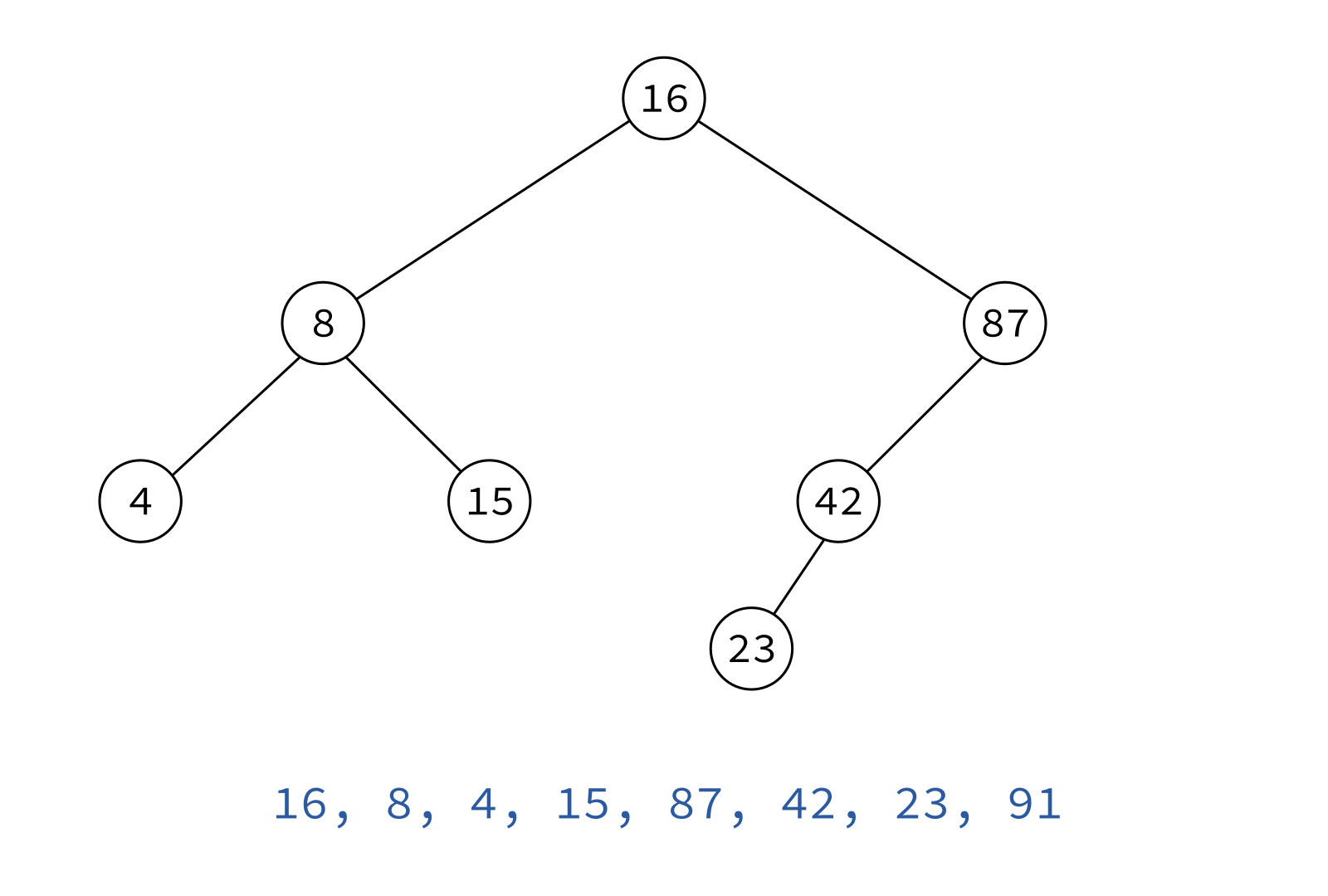
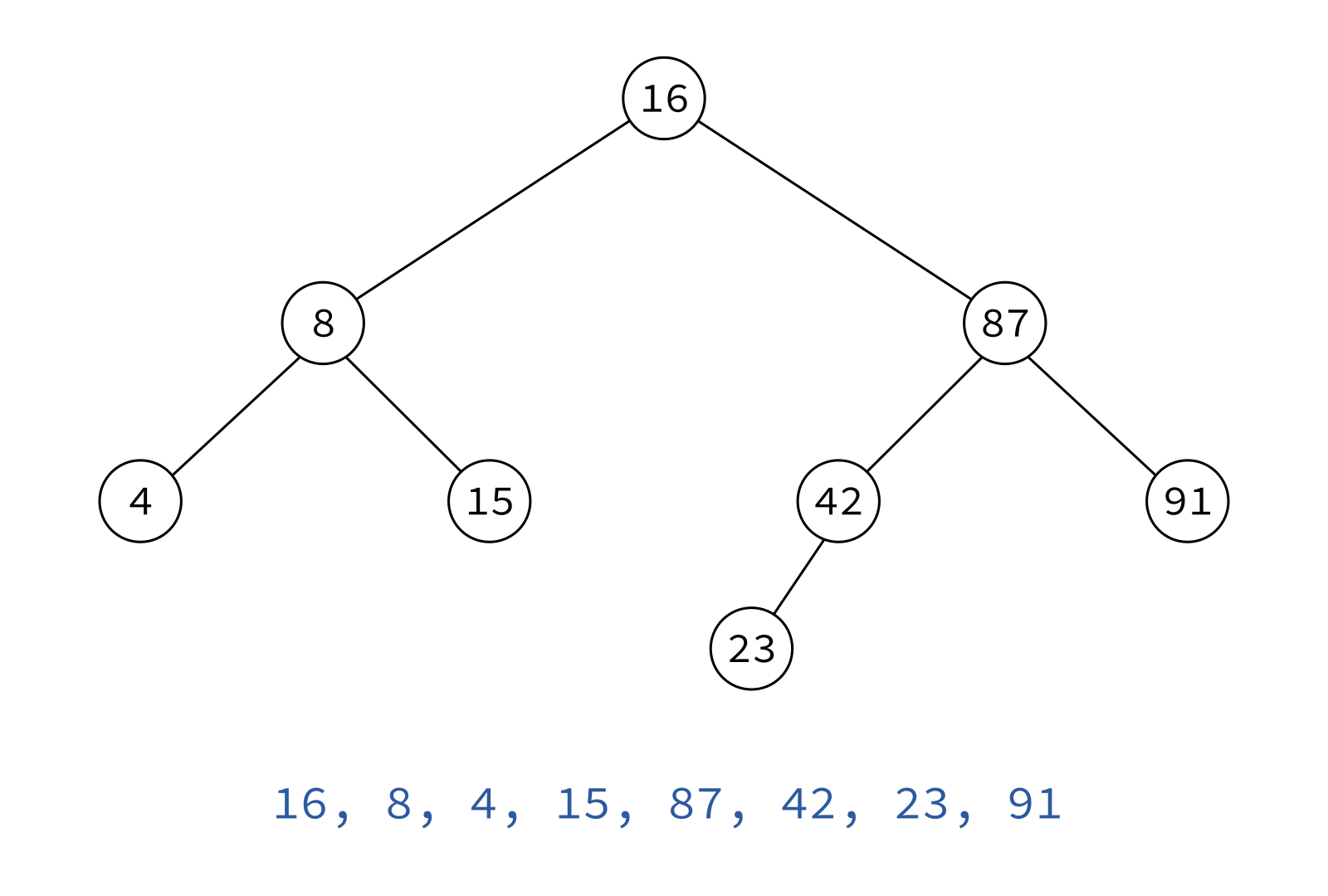
Postorder traversal
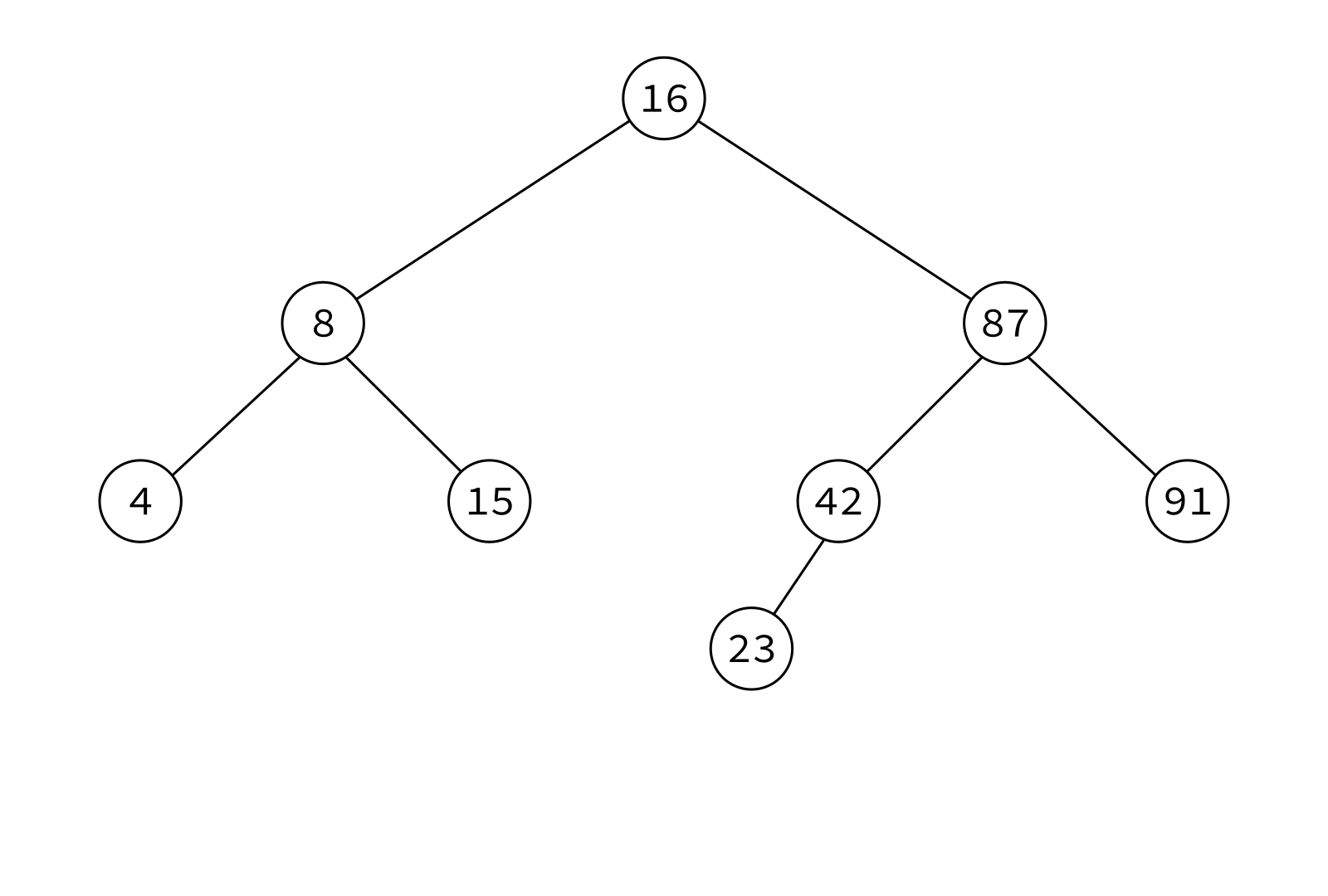

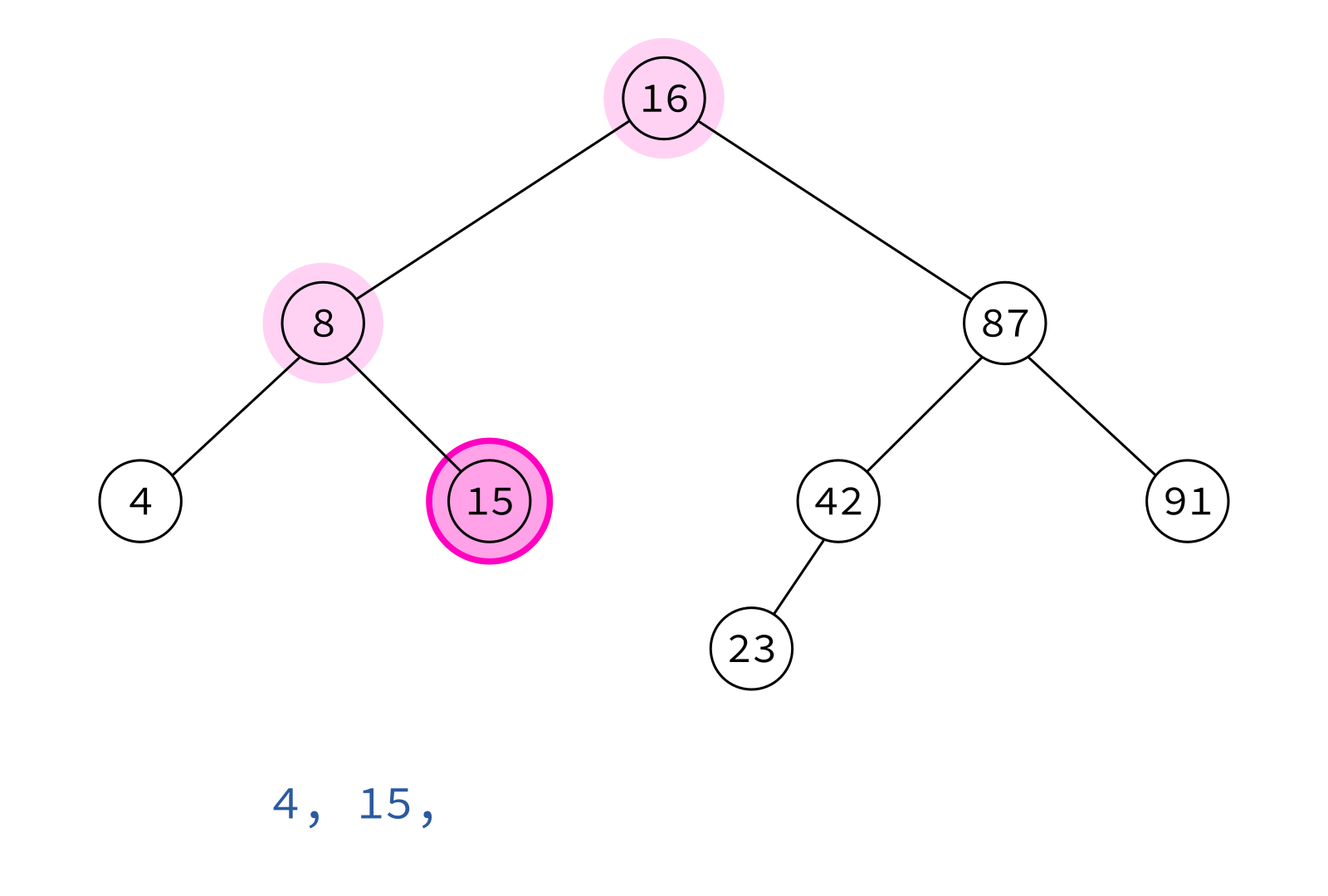


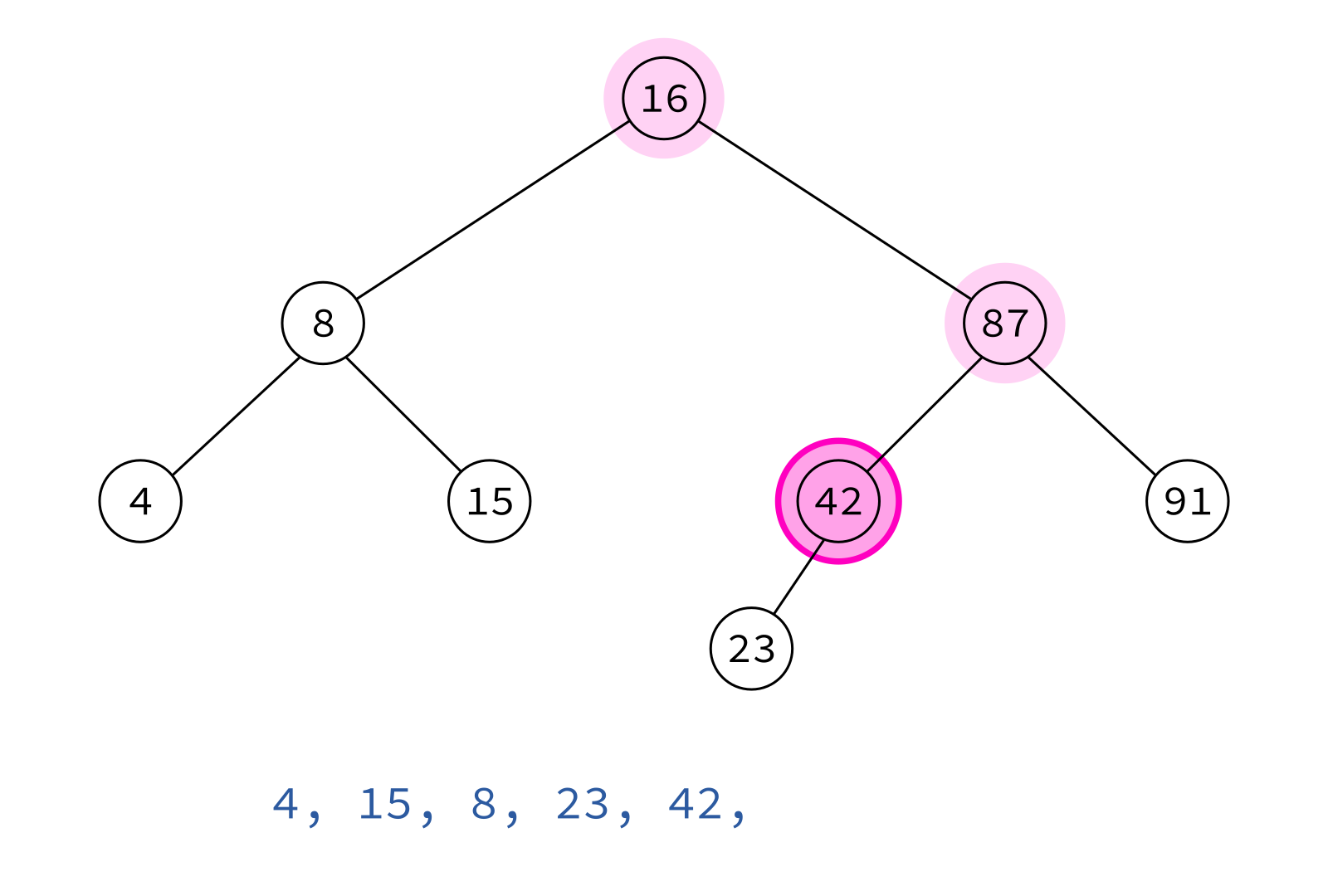


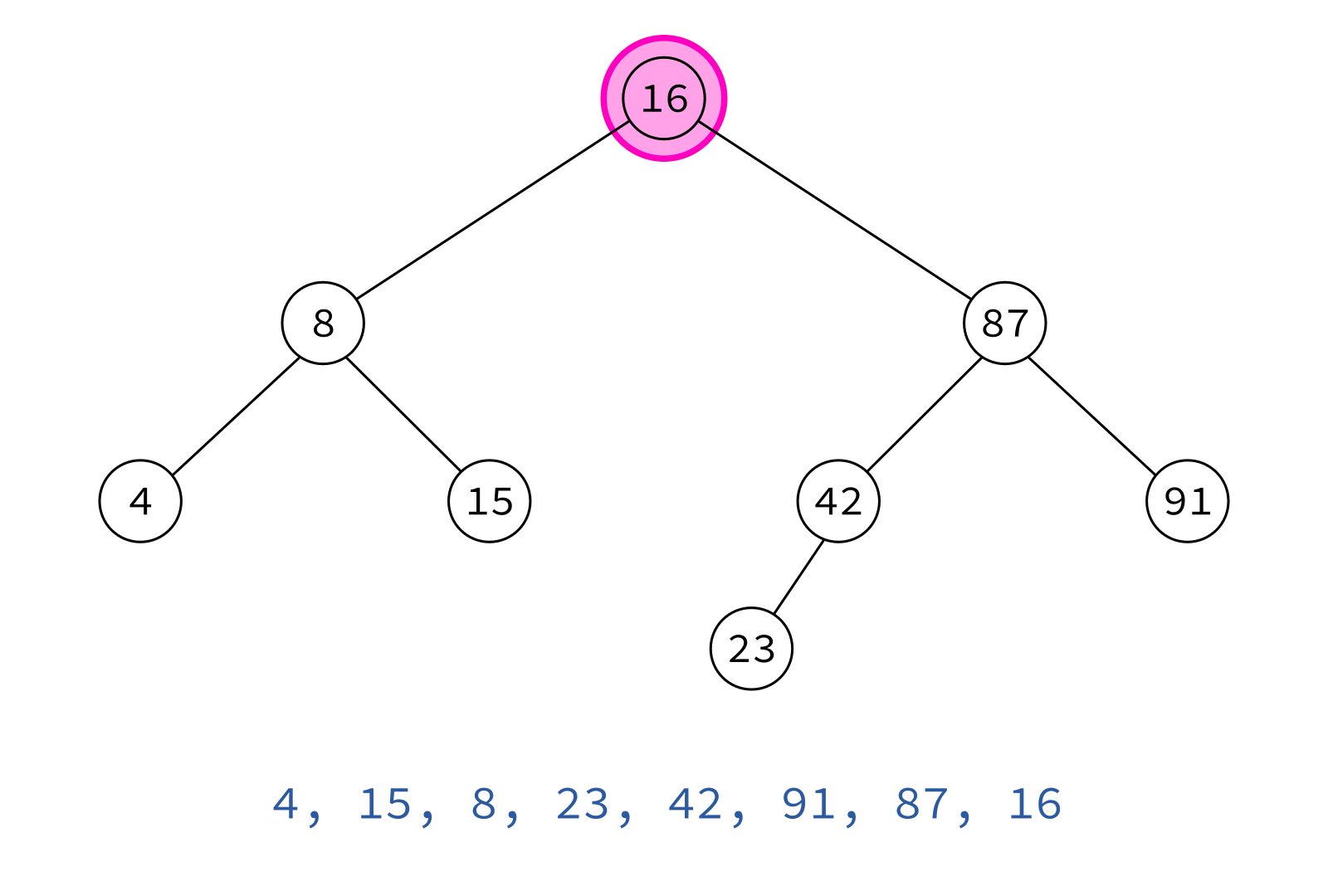
left, right, node
Postorder traversal
Typical use: Delete the tree.
If you delete keys in postorder, then you will only ever be removing nodes without children.
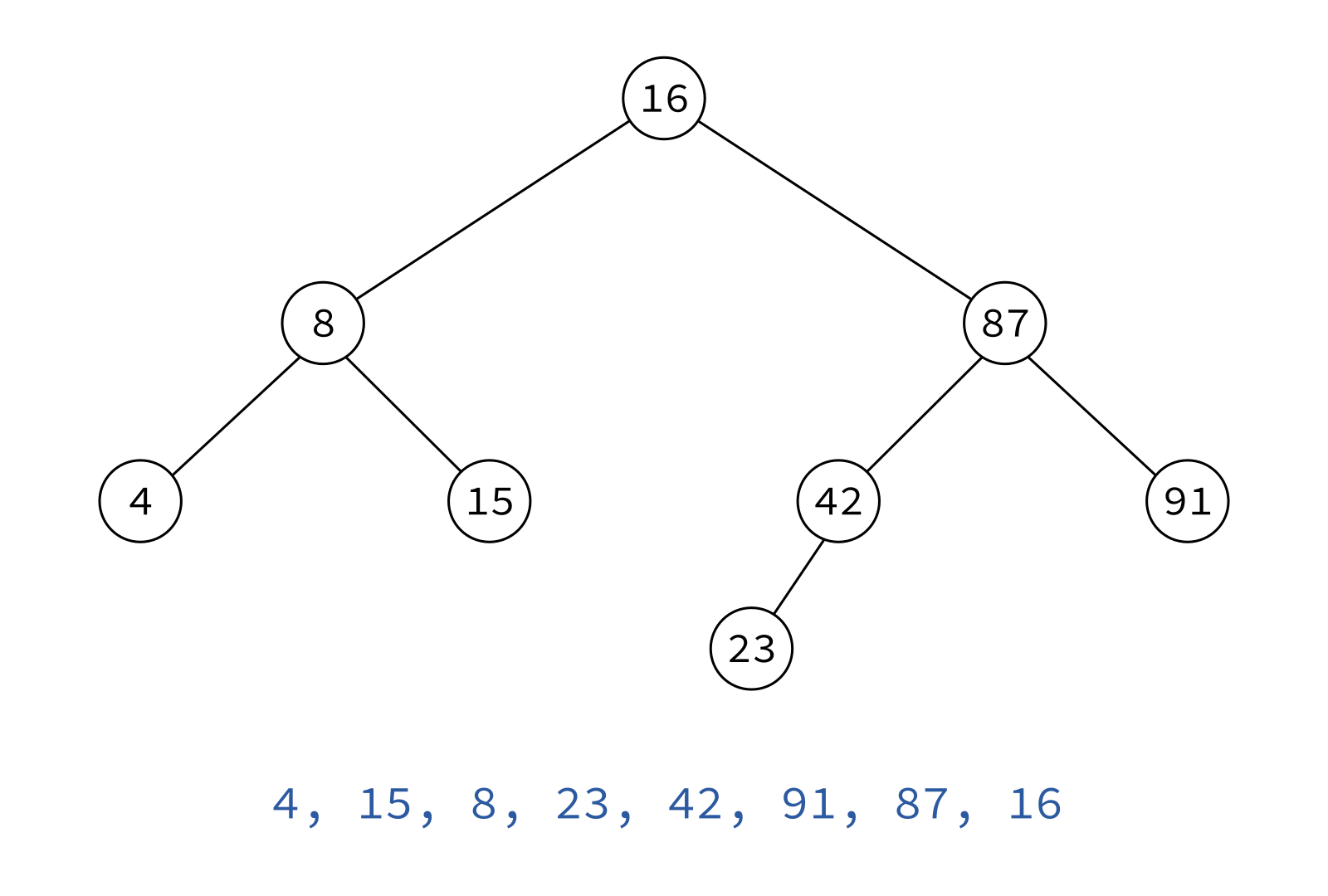
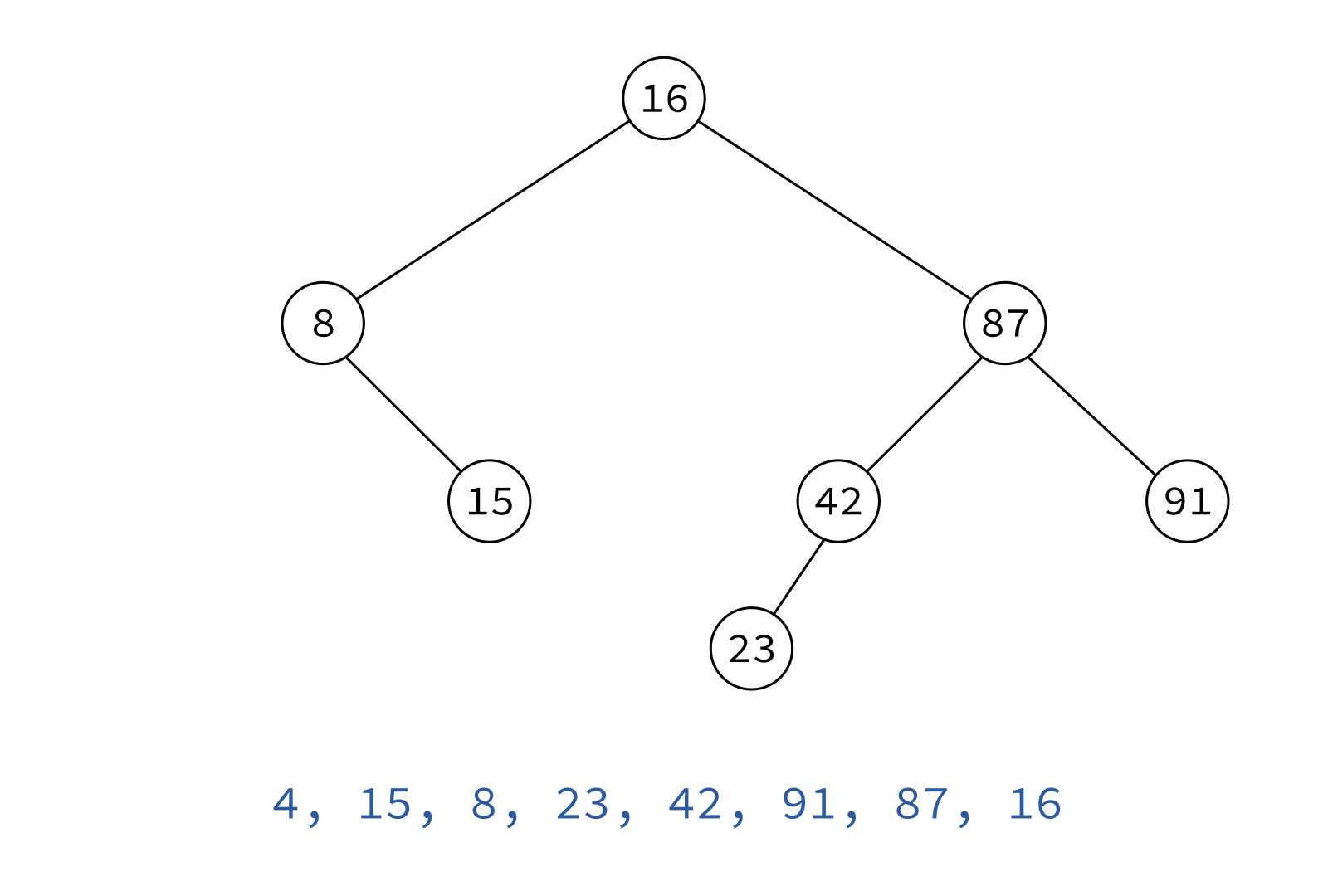

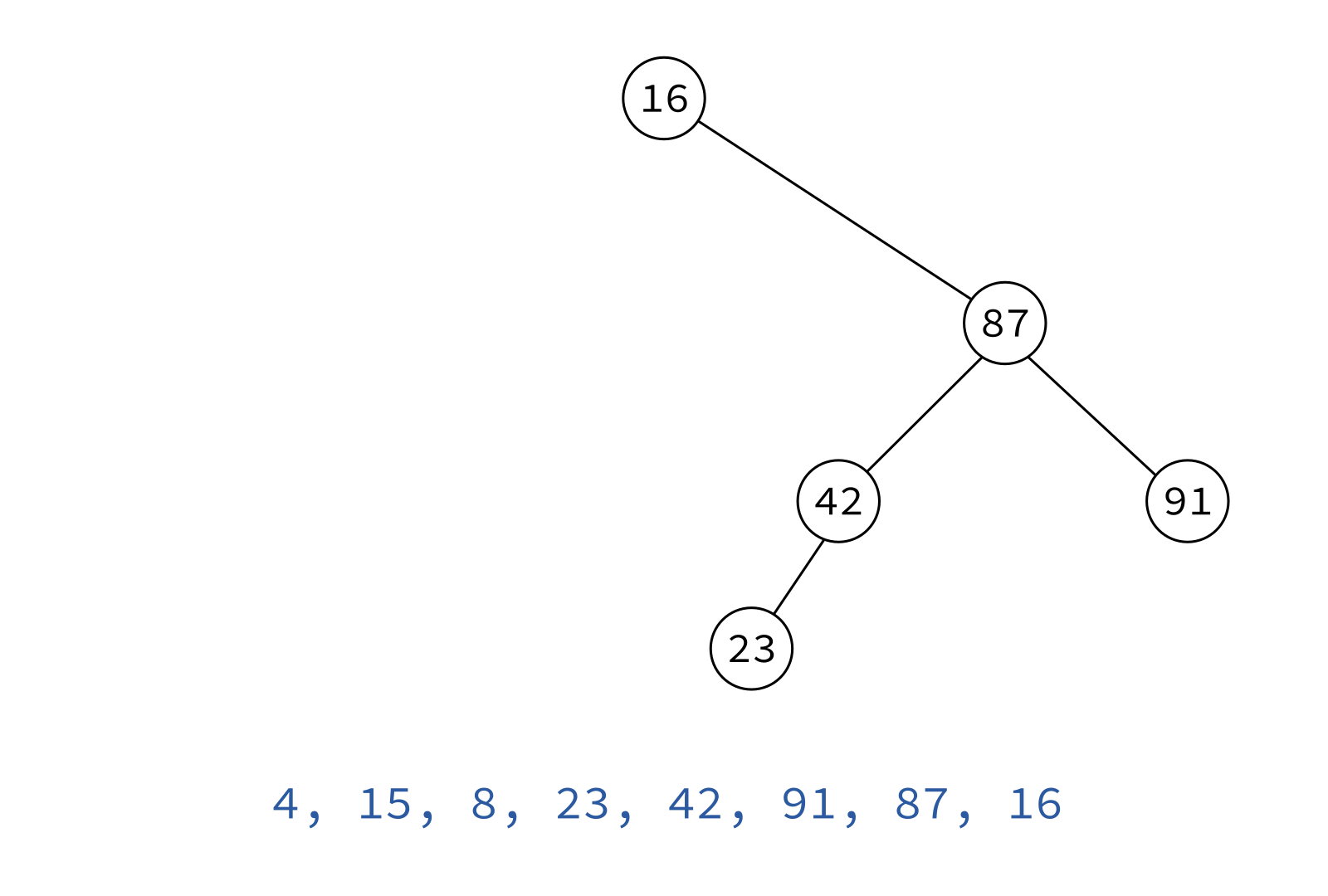

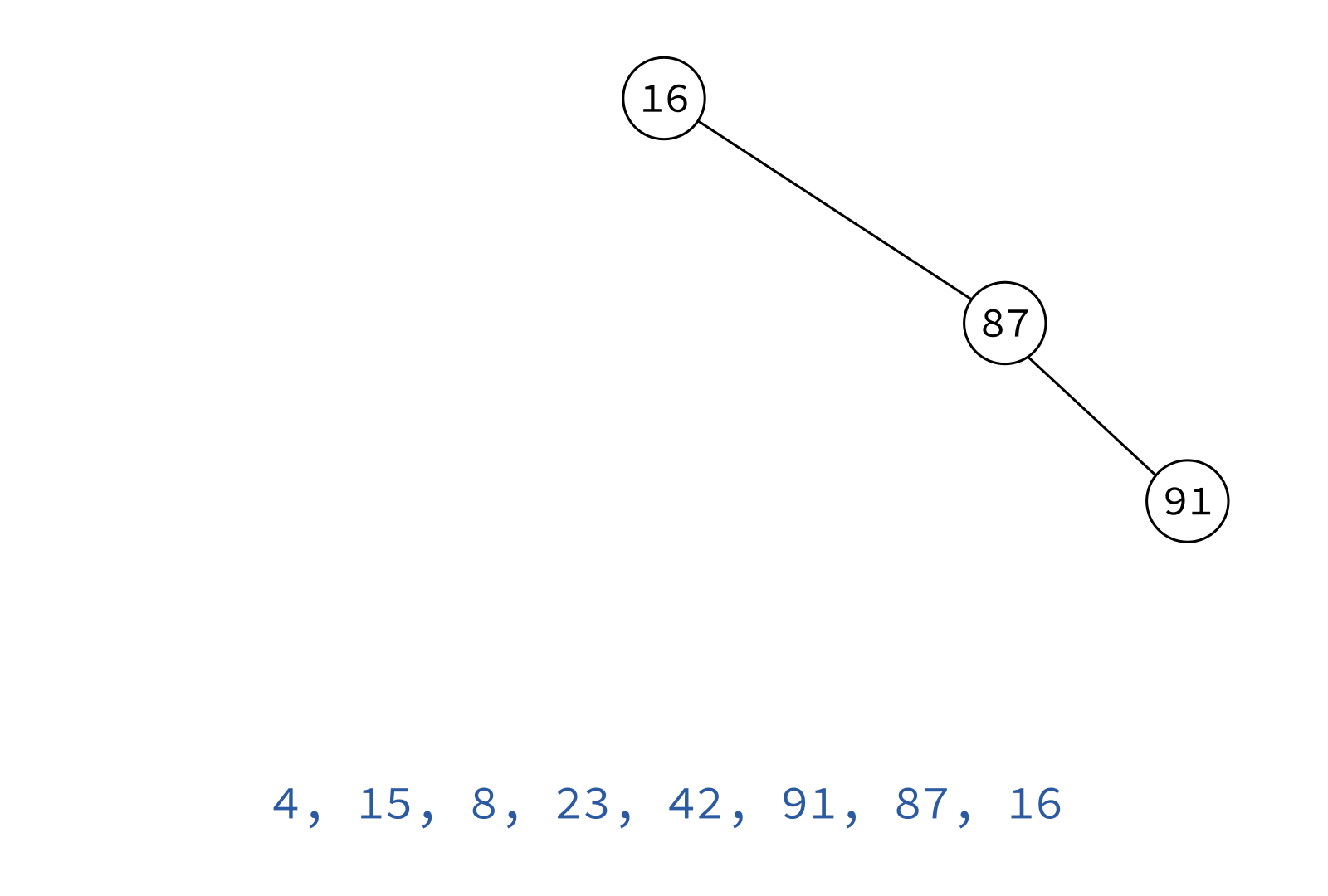
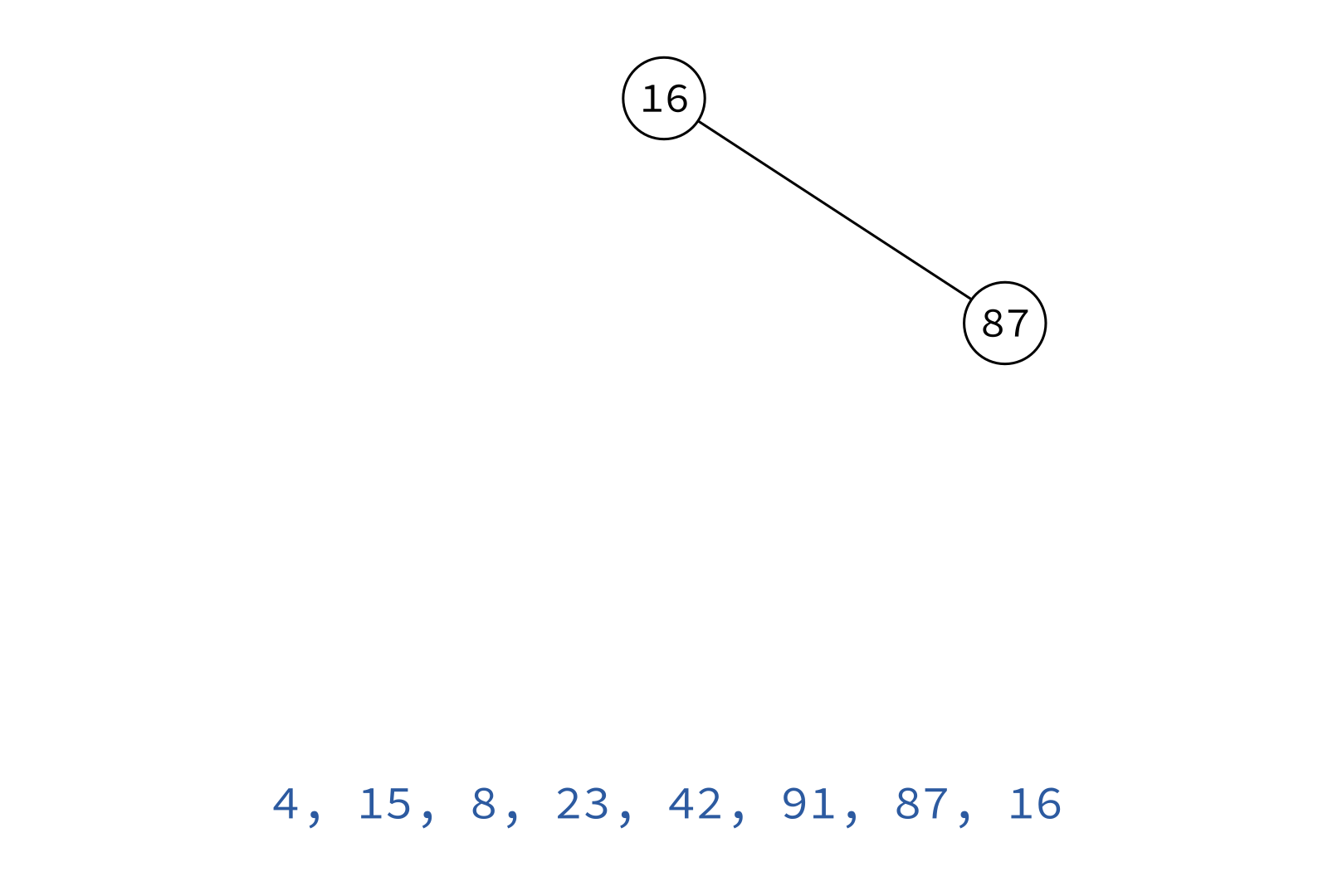
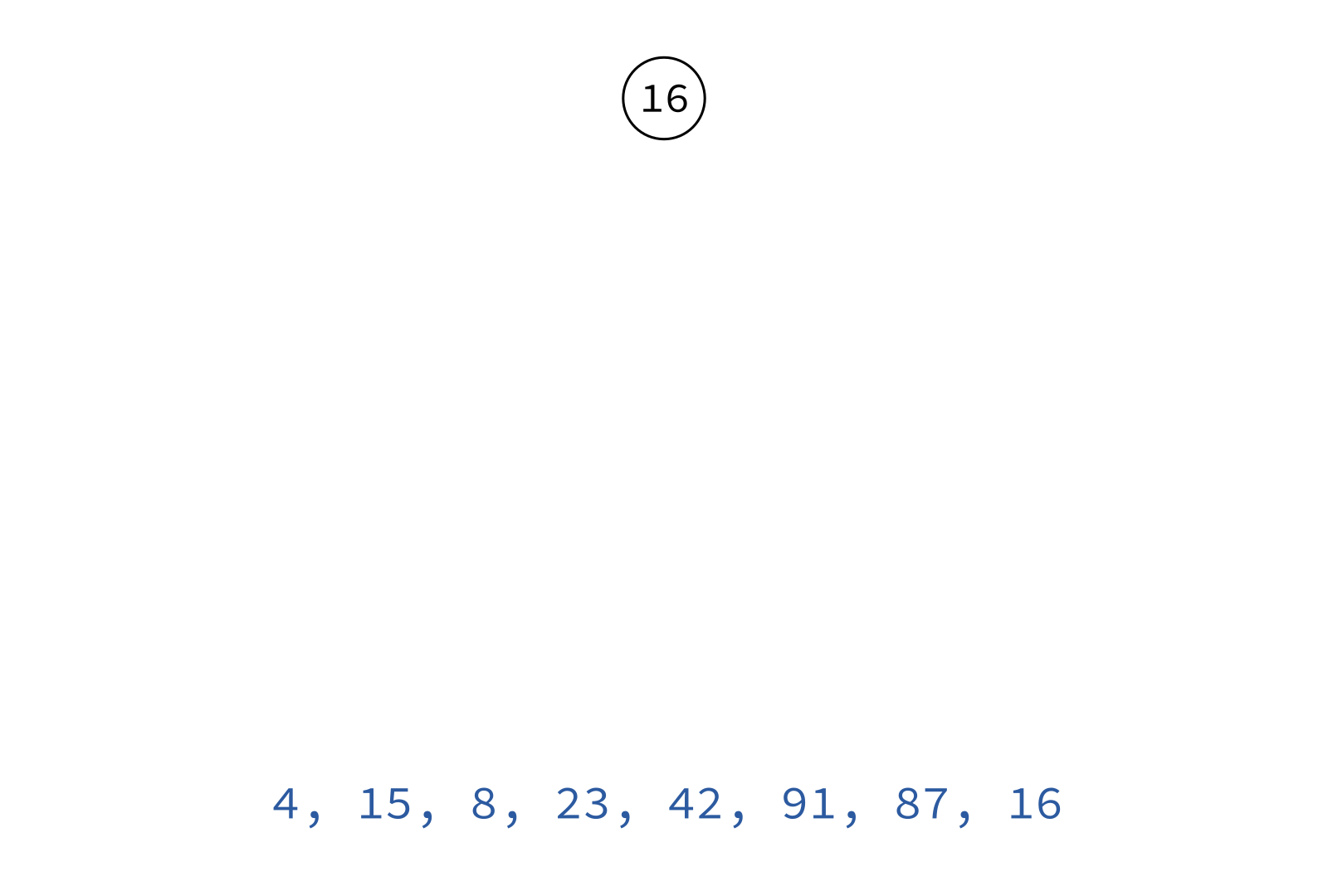
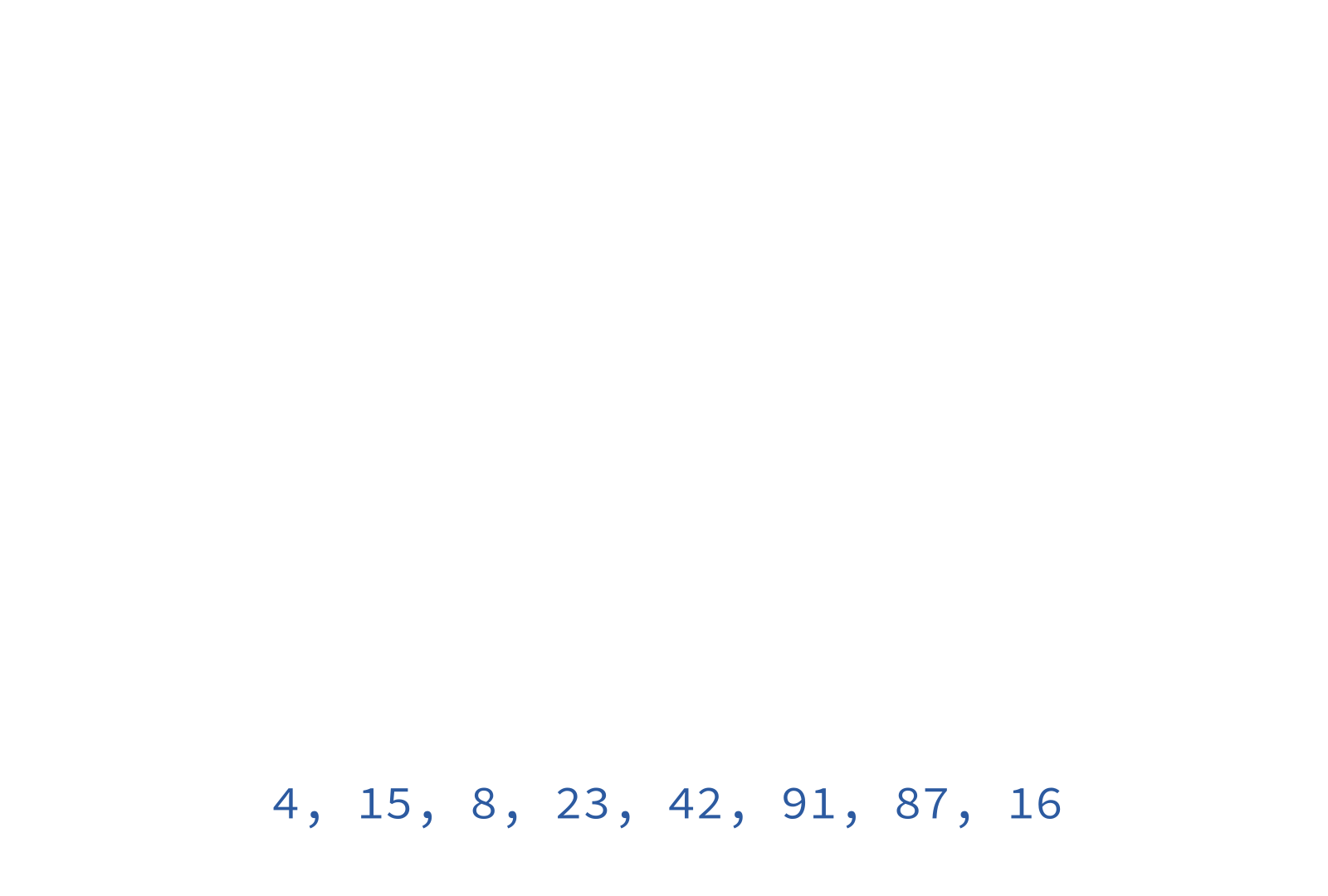
Inorder traversal
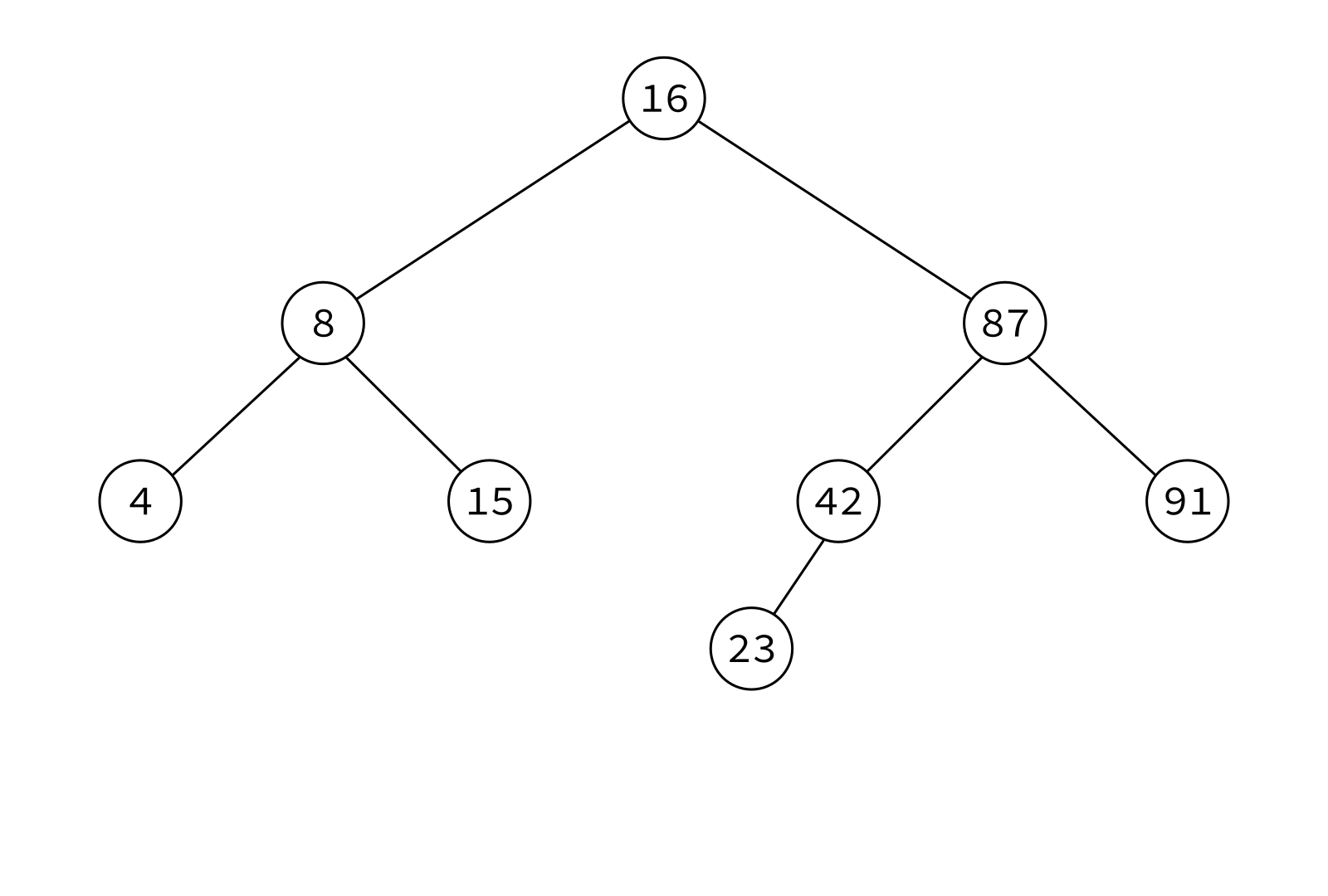
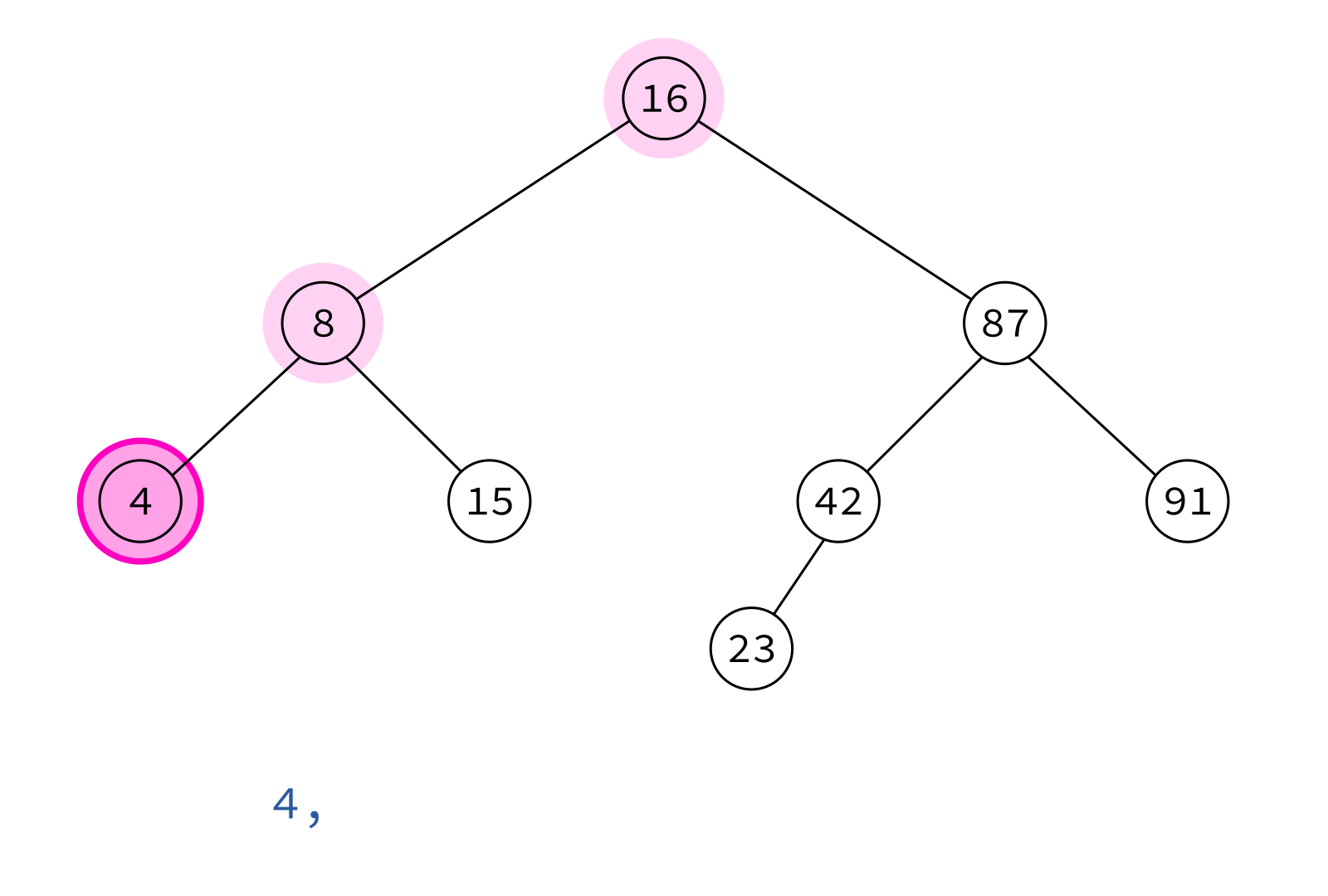
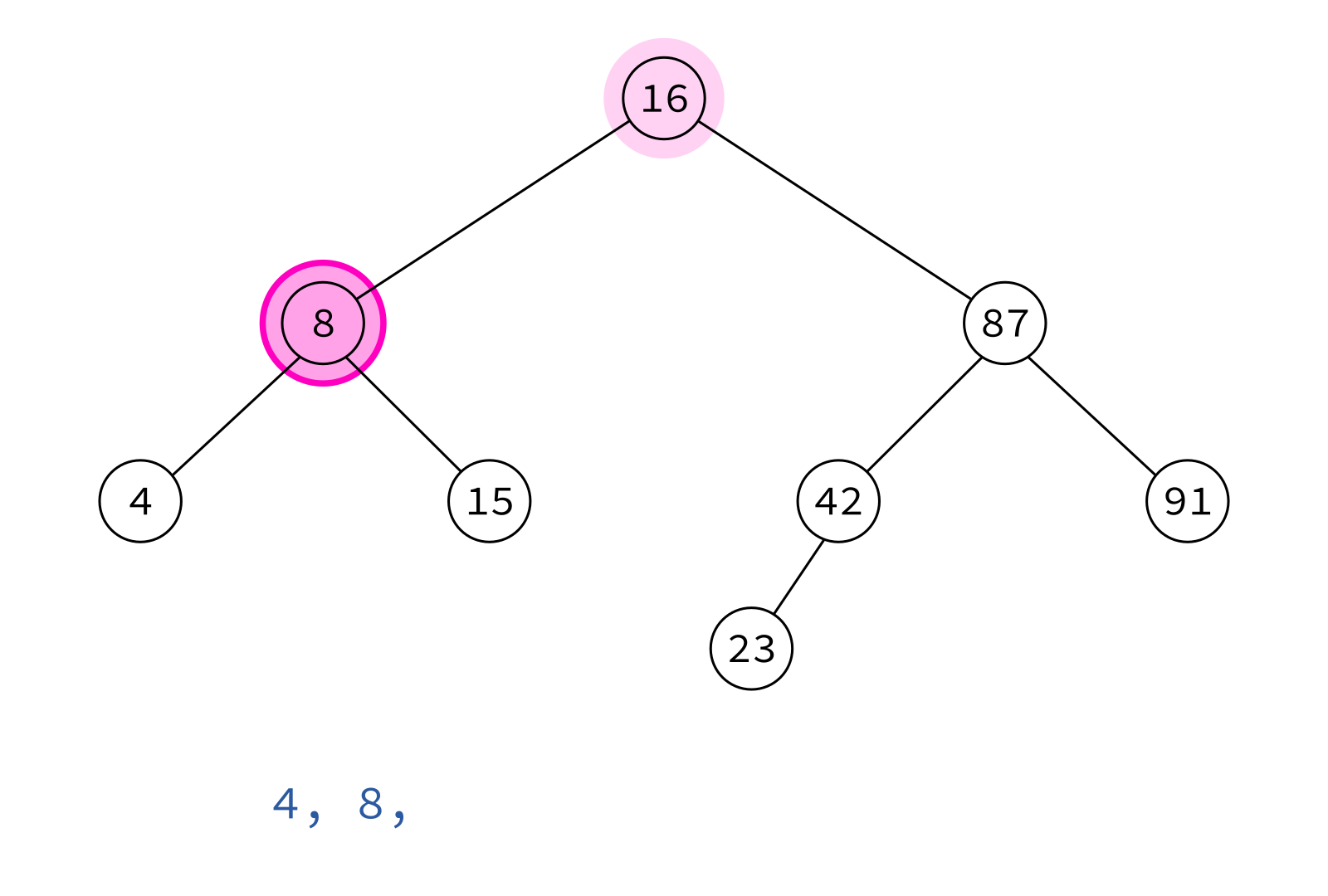
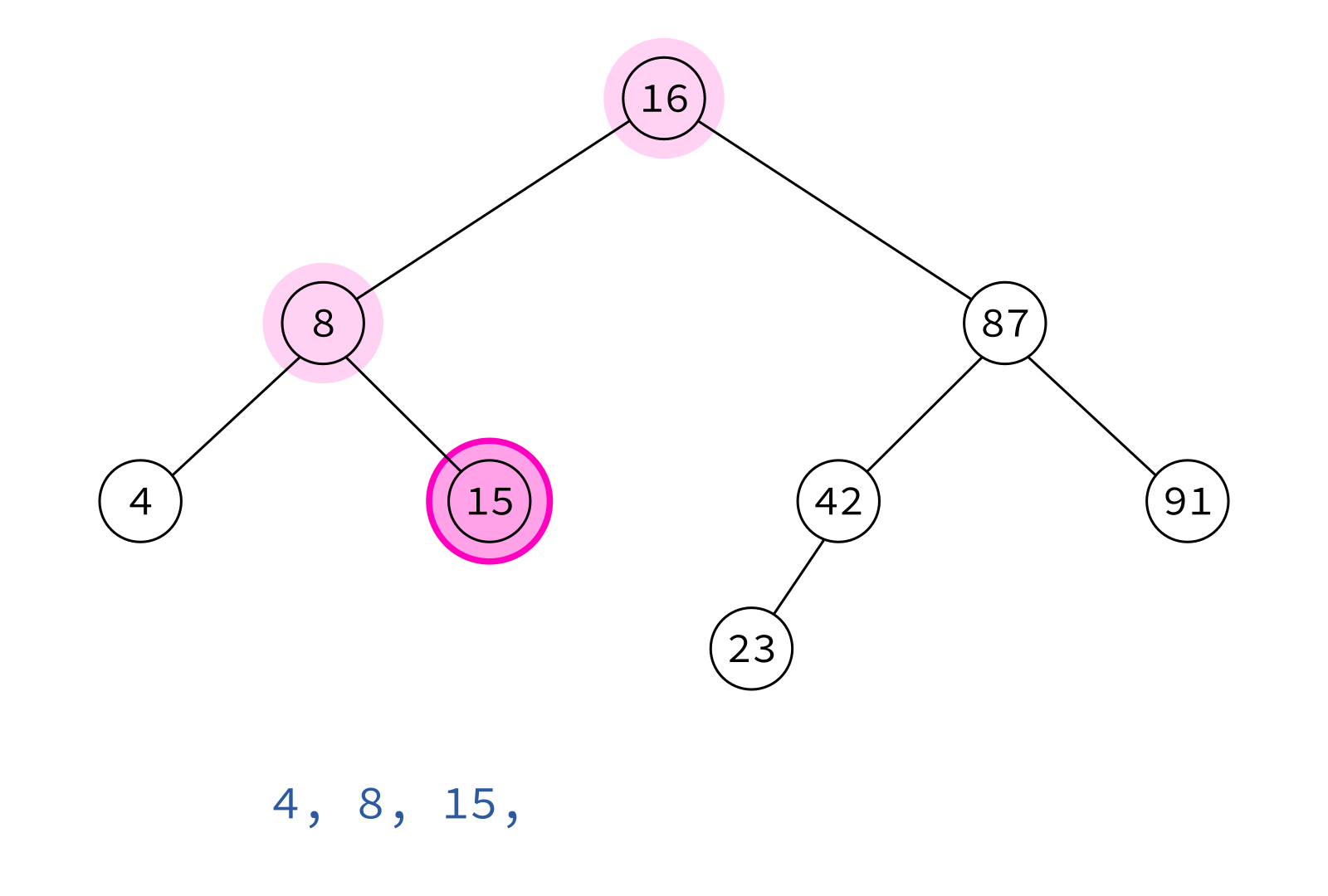
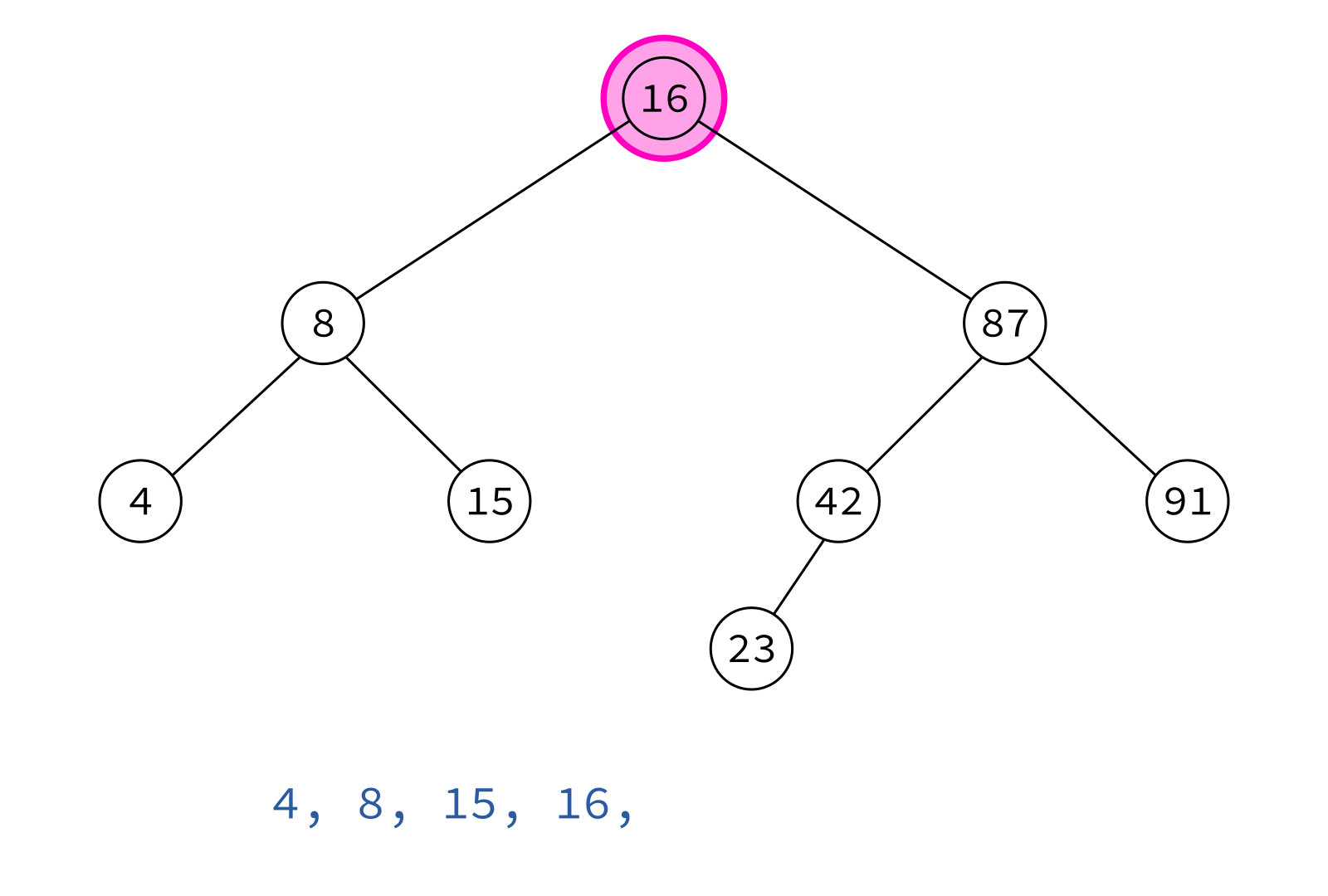
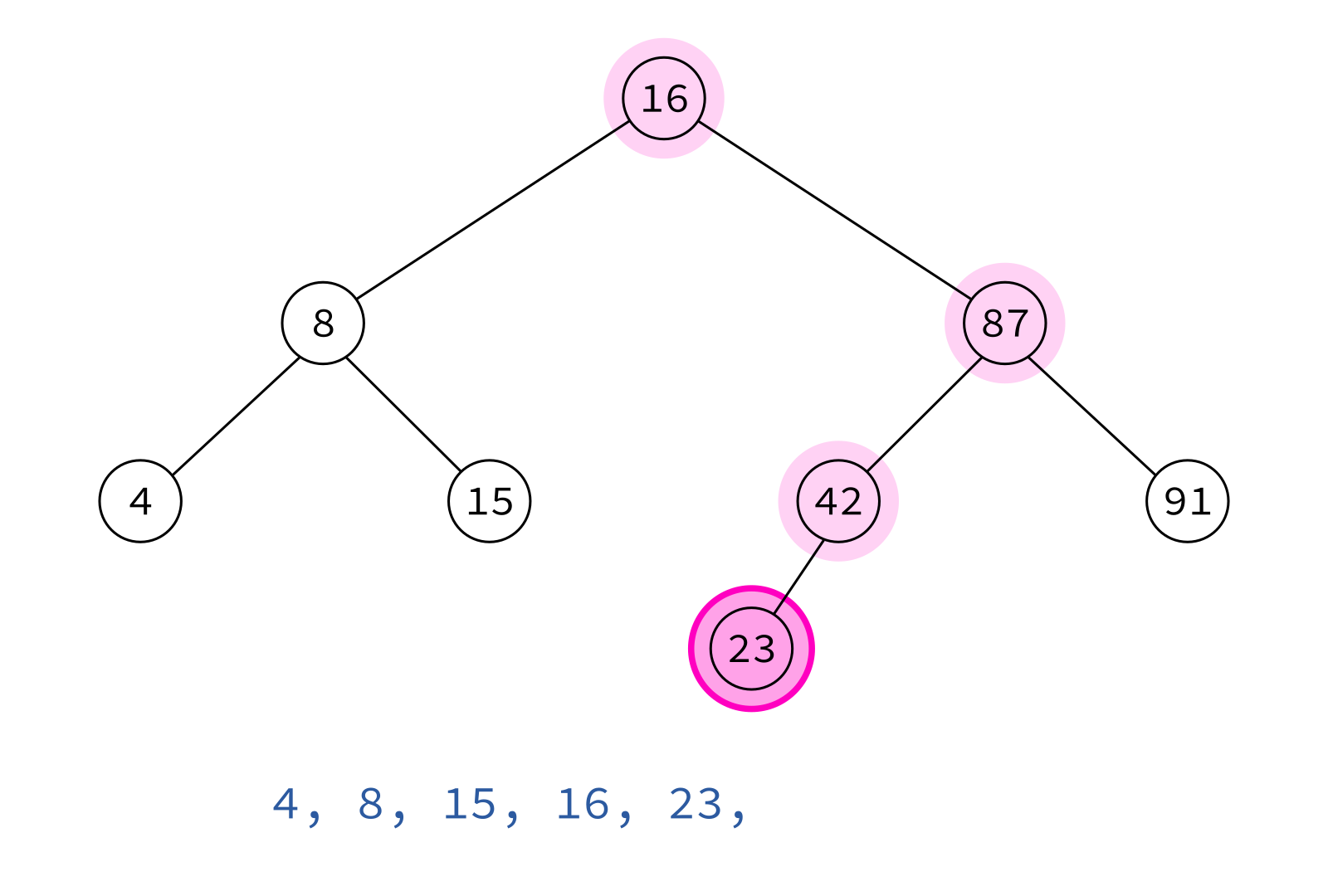

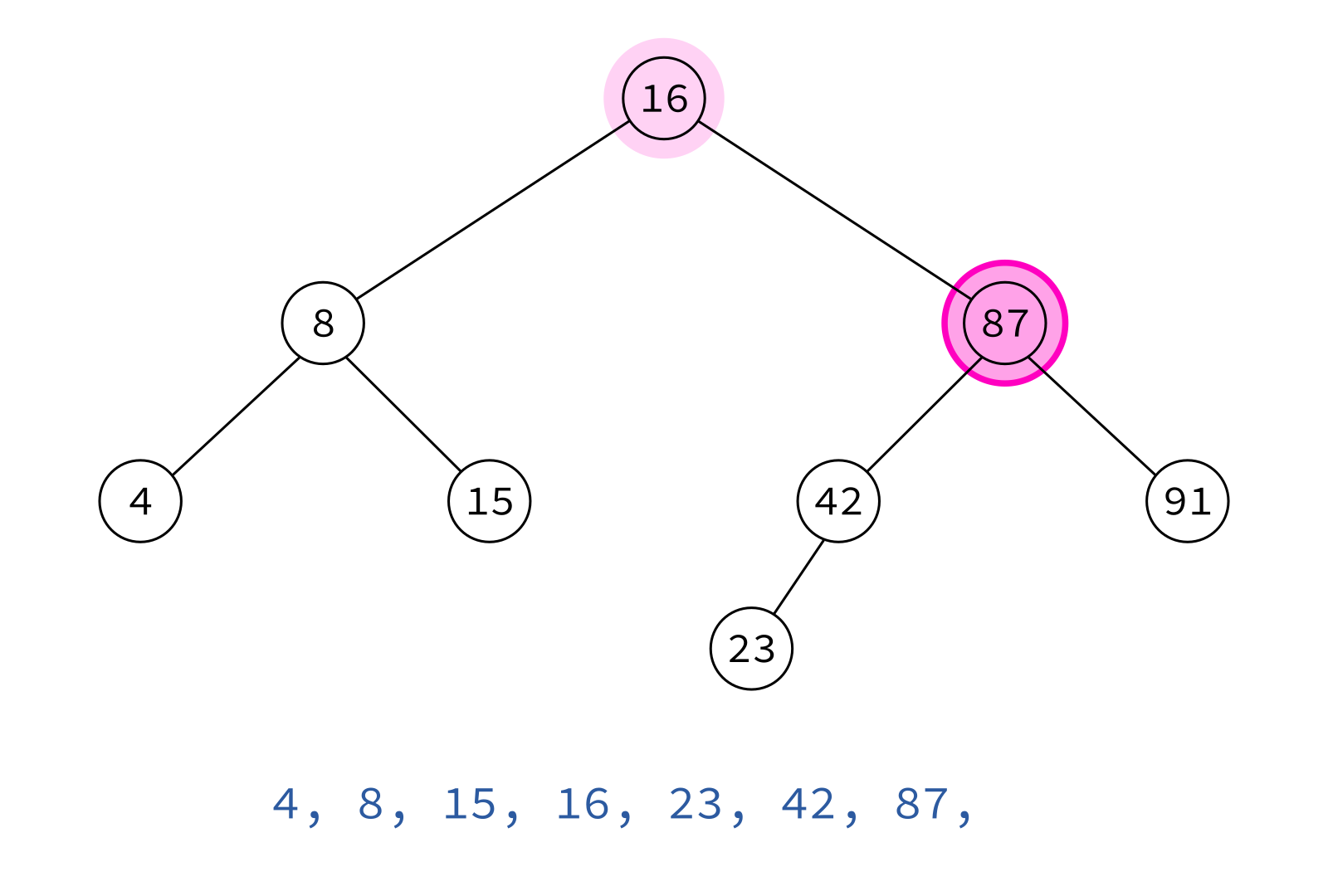
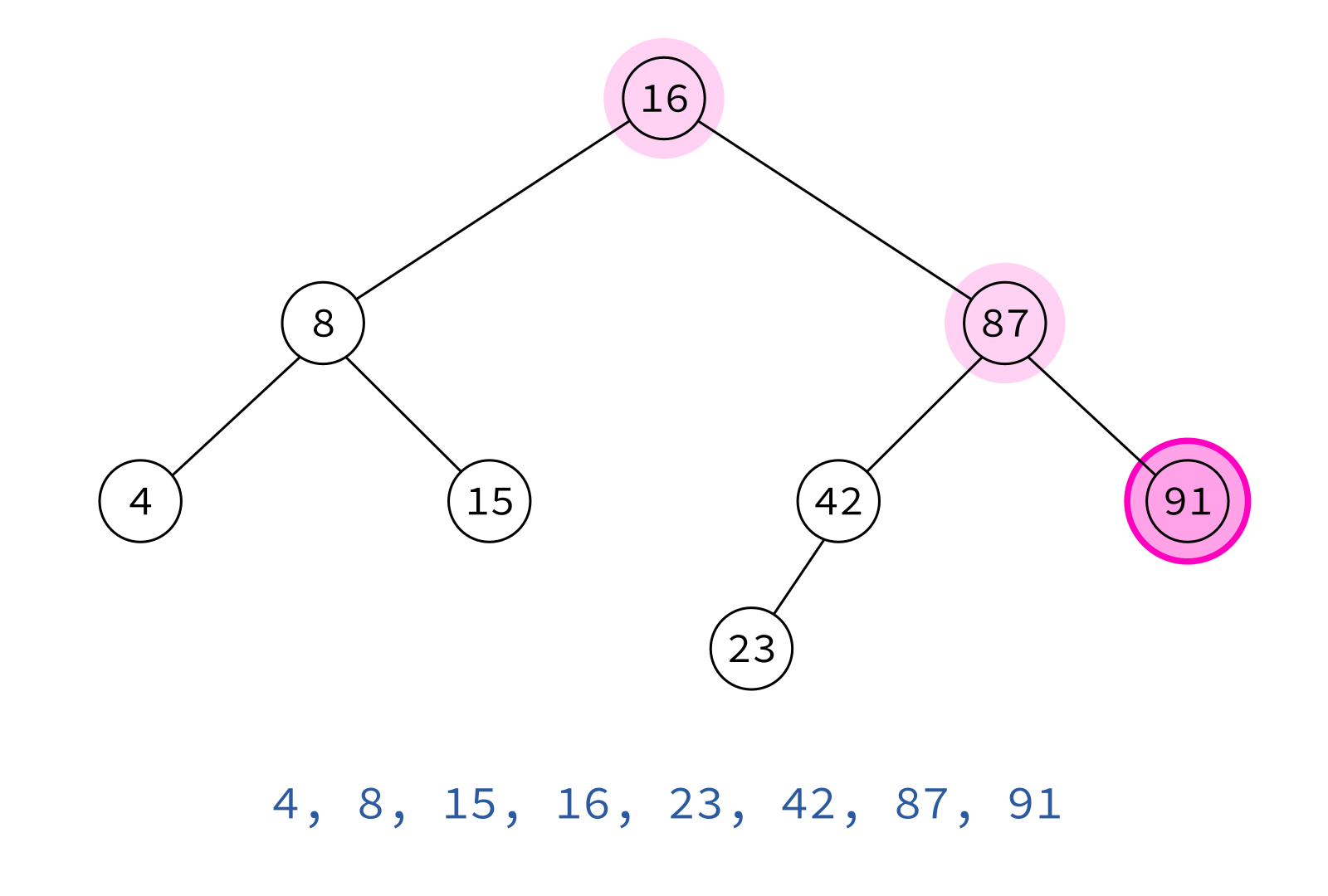
left, node, right
Inorder traversal
Typical use: Turn a BST into a sorted list of keys.
References
-
In optional course texts:
- Problem Solving with Algorithms and Data Structures using Python by Miller and Ranum, discusses binary trees in Chapter 7.
-
Elsewhere:
- Cormen, Leiserson, Rivest, and Stein discusses graph theory and trees in Appendices B.4 and B.5, and binary search trees in Chapter 12.
Revision history
- 2022-02-28 Initial publication